The Diamond DA62
Intro
Wikipedia states that the Diamond DA62 is a five to seven seat, twin-engined light aircraft produced by Diamond Aircraft Industries and first announced in March 2012. Diamond Aircraft Industries is a Chinese-owned manufacturer of general aviation aircraft and motor gliders, based in Austria.
It is the third largest manufacturer of aircraft for the general aviation sector, possessing its own manufacturing facilities in Wiener Neustadt, Lower Austria and in London, Ontario, Canada, as well as further production lines operated as joint ventures in other nations, such as China.
The prototype aircraft, designated as the DA52, first flew on 3 April 2012 after six months of development. In June 2014 it was announced the production aircraft would be designated the DA62. The DA62 development team is headed by Diamond managing director Manfred Zipper. It is based upon the fuselage of the single-engine Diamond DA50, but with two Austro AE300 diesel engines burning Jet-A fuel. Company CEO Christian Dries indicated that the engines may be replaced with turboprops.
In flying the prototype from Diamond’s Wiener Neustadt plant to the 2012 AERO Friedrichshafen aviation trade show, the aircraft achieved 16.6 mpg fuel efficiency, the result of improvements in cooling drag and aerodynamic drag made during its development. The company originally intended to have the aircraft available for sale in July 2013 and expected to offer fly-by-wire controls as an option by 2014, but development was delayed and those dates were not met.
The DA62 was European Aviation Safety Agency (EASA)-certified on 16 April 2015. By September 2015, the company was preparing to deliver the first production DA62s to customers the following month and was manufacturing the first aircraft destined for the US market, the tenth DA52/DA62 to be built and the third production aircraft, for an appearance at that year’s National Business Aviation Association Convention in November. American Federal Aviation Administration (FAA) certification was received on 23 February 2016.
The aircraft is available in two weight versions. The “European” version has five seats and a maximum takeoff weight (MTOW) of 1,999 kilograms (4,407 lb), the “US” version has seven seats and a MTOW of 2,300 kilograms (5,071 lb). The lower MTOW of the “European” version is to allow operators to avoid higher weight-based air traffic control user charges. The third row of seating and increased MTOW of the “US” version are available as factory options at extra cost. By April 2019 more than 120 DA62s had been delivered.
Specifications DA62: General characteristics
- Crew: one
- Capacity: up to six passengers
- Length: 9.19 m (30 ft 2 in)
- Wingspan: 14.7 m (48 ft 3 in)
- Height: 2.28 m (7 ft 6 in)
- Wing area: 17.10 m2 (184.1 sq ft)
- Empty weight: 1,570 kg (3,461 lb)
- Max takeoff weight: 2,300 kg (5,071 lb)
- Fuel capacity: 326 litres (72 imp gal; 86 US gal)
- Powerplant: 2 × Austro AE330 diesel aircraft engines, 134 kW (180 hp) each
Specifications DA62: Performance
- Maximum speed: 367 km/h (228 mph; 198 kn) (True Air Speed (TAS))
- Cruise speed: 325 km/h (202 mph; 175 kn) (TAS)
- Stall speed: 125 km/h (78 mph; 67 kn)
- Never exceed speed: 379 km/h (235 mph; 205 kn)
- Range: 2,380 km (1,479 mi; 1,285 nmi)
- Endurance: 10 h
- Service ceiling: 6,100 m (20,000 ft)
- Rate of climb: 6.1 m/s (1,200 ft/min)
- Fuel consumption: 7.4 US gal (28 l) per hour total at loiter
I have not flown in a DA-62 nor seen one in real life and I am not qualified as a pilot. I do not claim any expertise in X-Plane and carry out the review from the viewpoint of a person who uses X-Plane on a recreational basis. I try to produce a review that addresses the questions I would ask when interested in this model and make comments that I hope someone of my experience will find useful.
Installation and Documentation
Download speeds vary with internet connection but once connected the download went very smoothly. Once downloaded the file can be copied in to the users aircraft account. The aircraft can then be loaded via the X-Plane flight configuration menu. On the first loading the user is required to enter the licence number, provided with the download, and reload the aircraft.
The model is then ready to use. The model is provided with eleven liveries including a default livery and Low Res livery to help with frame rates. In terms of graphics the developers state,“this product has been optimised for good performance. However, the aircraft uses several high definition liveries (4K) for a high graphical quality, and complex custom programming for the avionics. For a great experience, we recommend your graphic card has at least 4 GB of VRAM.”
A plug in also loads and that creates a pop up options window that controls passengers, luggage, fuel, payload, reflections, oxygen sounds, breakers and fluid levels, doors and ground equipment. A second page covers the G1000 and rain effects and a third covers sound levels before a final credits page. This enables adjustments to be made without referring to the flight configuration menu and reloading the flight as well as settings bespoke to the model.
The documents folder contains ten documents:
- An installation settings PDF
- A Quick Views PDF using the default X-Plane numeric keys
- A chart of airspeeds for normal operations
- A PDF booklet of performance tables
- An eighteen page normal operations checklist PDF
- A fifteen page emergency procedures checklist PDF
- A guide to the MD302 Standby Attitude Module fitted to the model with links to the website of the real life equipment
- A PDF guide to the use of Avitab which creates an in cockpit tablet to view moving maps, charts and other documents.
- A PDF guide to the fitted customised G1000.
A nineteen page DA62 Flight Manual PDF which contains sections to cover requirement and installation, performance, the main features of the model, the Garmin G1000, the options panel, ECU overview, fuel system, ice protection system, oxygen system, the overhead panel, the MD 302, breakers, rain and ice effects, preferences, frequently asked questions and credits.
Whilst all of these are very helpful and useful reference documents whilst actually loading and flying the aircraft I would certainly recommend reading the guide documents before using the model, including the Avitab guide if the user intends to load it. The instruments provided in the model have considerable capability and those new to them will need to refer to the manuals in order to use them to their full potential as even the Garmin G1000 has been customised from the X-Plane default model to improve the user interface.
Exterior Modelling
I approached the aircraft, whilst it was sitting on the ramp, from the front left having used the on screen menu to put the ground equipment in place. The immediate impression is one of a highly detailed model with smooth, crisp lines and bright livery and signage, The windows are very clear and the aircraft occupants are well modelled.
These, too, can be altered and adjusted via the on screen menu. I used the same menu to open the doors on the aircraft. The doors opened smoothly and realistically and the corresponding shadows moved and changed accordingly. Having opened the luggage doors a luggage trolley also appeared. Moving closer to the aircraft the model maintains its clarity and the panel and paint textures become more evident.
Closer inspection of the engine shows detailed air intakes and a very detailed propellor boss with very realistic reflections. The propellors have great detail including visible makers marks. Signage and markings also remain clear and legible and the anti slip strips on the wings can be viewed. Taking a lower view showed that the undercarriage and tyres carry the same level of detail and are very convincing.
The view from the front shows that the other side of the aircraft mirrors the first and and the level of detail remains impressive however the model is viewed and with the doors open there is already a hint at a well produced interior. The panel detail and colours remain at a high level when viewing the aircraft from the side and the model fits well with the X-Plane scenery. Reflections and shadows add to the quality of the aircraft.
Moving the controls shows the response of surfaces and the fact that the nose wheel can clearly be seen to steer. Viewed from the rear the model reveals realistic exhausts and further undercarriage detail.
The fuselage and wing surfaces maintain their integrity and aerials and external equipment are modelled and visible. Moving closer to the aircraft the detail continues and views in to the interior shows varied colours and textures and the detailed doors. Closing the doors shows the reflections and lighting to good effect and the clear signage on the door handles.
Viewed from the side with doors closed the model shows clean lines, bright livery and control surface detail with great shadow and light effect. This is a highly detailed model and looks great from all directions. The ability to open doors and use ground equipment adds to the realism and creates an enjoyable experience.
In the air the model maintains its impressive appearance and good use of light and shadow. The propellor blur effect is convincing and the figures inside the aircraft are detailed and realistic. Control surfaces and lighting are modelled and add to this great little aircraft.
Interior Modelling
Sitting in the pilots seat the instrument panel is bright and clear with vivid colours and crisp displays. Views to the outside are also very good, whether through the glass or the open door apertures, and give another view of the exterior modelling of the aircraft.
Doors can be opened with their bespoke handles from inside as well as through the on screen menus. The instrument displays are easy to view and read and hovering the mouse over a switch, lever or dial creates pointers as to how the switch is used and labels for what that particular piece of equipment is for.
Whilst experienced pilots will not necessarily need this this added help is great for someone learning the aircraft. The internal equipment responds well to joystick and keyboard inputs. The internal view of the panel and instruments remains impressive in low light as does the cabin interior with the cabin lights on.
The textures of the various materials within the cockpit and cabin are modelled to a high standard with stitching, fastenings and screw heads produced in detail. The only slight issue I had was that the manual mentions two different interiors depending on the livery chosen but I was unable to change the interior under any livery. This is a small detail and does not detract from the enjoyment of the model in any way.
The model is produced with limited weathering and wear but it is evident in places such as the rear passenger seats. Equipment expected in this aircraft is modelled and displayed such as headphones and handbooks. Light and shadow again add to the realism inside the aircraft and create a very good experience.
The internal modelling very much matches the high standards of the external views of the aircraft and the clarity of the displays and labelling make the cockpit easier to use.
Sound
The aircraft has FMOD enhanced 3D system sounds, the levels of which can be controlled from the on screen menu and also the interior and exterior sound levels can be controlled by scrolling over the headphone jacks in the cockpit. The engine sound is rich and deep and is very realistic at engine start. It reacts to throttle input and becomes easy to read in terms of engine work load and throttle settings.
Switches and levers have their own sounds and are very convincing. Realistic oxygen sounds can be heard when the masks and oxygen system are deployed and there are rain sound effects when precipitation occurs. Doors and windows open with their own sounds and any warnings are clearly audible. The engine noise comes from the correct direction as the start up procedure takes place.
The movement of the flaps and undercarriage is accompanied by the appropriate sounds to confirm that the user has put the operation in place and tyre sounds are present when the aircraft lands. The whole sound package is very good and compliments the standard of the visual presentation of the aircraft, adding to the total experience.
Systems
The model comes with its own systems to make it quicker and easier to use as well as the modelling of real world systems for the aircraft itself. The developer have considered the user interface within the model to make the use of the aircraft easier than default systems and have included ways to update and change settings without having to return to the flight configuration and settings pages.
There are numerous custom commands for this aircraft that can be set up via the settings page for joystick and keyboard in X-Plane. The variations are too numerous to list here and each individual user will want to create the set up that suits them.
The main means of creating quick changes to the aircraft is the aforementioned on screen menu. This can be launched either by opening the plug in in the menu bar or by moving the cursor to the left part of the screen. I have outlined the various options in the download section of the review and these are very easy to follow by simply clicking labelled buttons and icons or by hovering over the fuel tanks display and increasing and reducing levels through scrolling the mouse.
There is also a numeric display that shows the weight of the aircraft divided in to appropriate sections. This menu allows for quick navigation around the aircraft and a smooth way of setting up the aircraft for a flight. Most of these settings are then stored for the next flight. Several tabs on the on screen menu also give access to quick settings for the G1000 and sounds for the model. The menu is quick and easy to use.
The model has the Laminar Research Garmin G1000 but the developers have also customised the display so engine information and de-icing annunciations are available in the 3D version. Another really useful addition is that where values such as altitudes or barometric pressure need to be changed the user can click the value on the screen, or hover the mouse in some cases and these brings up a pop up which allows the value to be entered directly from an on screen key pad or adjusted by the mouse control wheel.
This allows quick adjustments to these values. The MFD also allows keyboard input for route planning so rather than using the FMS knob to input flight plan locations and waypoints they can de directly inputted from the keyboard. These additions make the G1000 provided by Laminar Research even better and more use friendly.
This model is also equipped with MD302 Standby Attitude Module by SkunkCrafts. The developers provide some guidance in the manual, a separate document relating to this piece of equipment and a link to the real life original documentation. As mentioned before it is well worth reading these documents to understand what information this instrument can provide.
The display provides visual and digital representation of altitude, attitude, airspeed, slip, vertical trend and heading information. The options menu also allows the user to adjust altitude units, barometer units, symbols, attitude settings and altitude trend. This equipment sits in the middle of the instrument pane, visible to the occupants of both front seats.
The model has a simulated oxygen system which allows for flights above 125000 feet. The system can be controlled by a handle below the control panel. The aircraft oxygen bottle allows for about 200 minutes of oxygen shared between the occupants, who use oxygen masks with the system, and the bottle can be checked and filled through the on screen menu. The user needs to ensure hypoxia effects are enabled in the settings menu of X-Plane.
The ice protection system for the aircraft is simulated in the model. The system is not meant to cater for deliberate flight in icing conditions and is not an actual de-icing system. It is intended to prevent the gradual accumulation of ice and works by delivering de-icing fluid to relevant areas of the wings and windscreen and is controlled via a collection of switches in the control panel.
The de-icing fluid levels can be checked and re-filled from the on screen menu. The rate the fluid is used can be controlled and the system is equipped with lights to enable the wings to be checked for icing during low light and darkness.
The on screen menu allows the reliability of the aircraft circuit breakers to be set from perfect to terrible and also and random, varying option. These settings and variations can be argued to be more and more important as aircraft rely more heavily and a large amount of electrical systems. Vector aviation magazine explains that
“They are designed to interrupt the flow of electrical current when specific conditions of time and current are reached. Those conditions generate heat, and circuit breakers are designed to trip (open the circuit) before this heat damages either wiring equipment, which may have its own built-in protection or mitigation system, but are intended to protect the wiring and connectors, which would otherwise have no such protection.
It is wise to think twice before resetting any circuit breaker in flight. It is telling you that something is wrong – that there has been a serious electrical event. This danger signal must be interpreted with extreme caution. Resetting a circuit breaker tripped by an unknown cause should normally be a maintenance function conducted on the ground. The old rule of thumb to automatically try one reset is no longer considered prudent.”
The configurable reliability of the breakers means the pilot can set their own challenges as to whether to attempt a reset of the breaker, if possible, or to have to fly the aircraft without the particular system the breaker is designed to protect. Both options are challenging and add to the realism of the model and test the skill of the pilot.
Flight Experience
For my first flight I did not follow any check lists or procedures. I taxied from the ramp to the runway. The aircraft moved well across the ground and was easy to control, turn and direct. I lined up on the runway, lowered the flaps, increased the throttle, released the brakes and rolled down the runway. The great thing about this model is that nothing happens too fast.
Acceleration was calm and steady and the aircraft was easy to keep straight. At the appropriate speed the model told me it wanted to take off and it had the feel of a small, light aircraft with little control input needed to create a response. Again the climb was steady and easy to control and the aircraft responded really well to my first turn in to the circuit. The aircraft remained steady and stable in the circuit, reacting well to control inputs.
The aircraft is forgiving and there always seems to be time to correct any mistakes. I felt that I obscured the view of the runway with my first approach but corrected this on the second to make a successful landing.
Before my next flight I altered the weather settings to view the rain and icing effects created between the model and the Librain plug in. These went well and the weather effects were clear to see. The aircraft has no wipers and the rain clears the windscreen through movement through the air. I also checked how the aircraft looked in flight in low light and it remains impressive with clear bright lighting.
The model is compatible with the Avitab plug in and there is a tablet modelled next to the pilots footwell. Once Avitab is downloaded and placed in the X-Plane plug ins folder it can be opened either by clicking on the tablet or on the Avitab section of the plug ins list. The tablet then presents information on maps, routes, charts, airports and more, although some of these need to be loaded in to the appropriate folders from other sources. I can confirm the plug in is easy to load and works well with the tablet.
The one issue I did find is that after saving a flight or situation and then loading it later the aircraft engines went to off whether or not they had been working in the original situation. During a flight the engines loaded as operating and then went to off. Despite this the aircraft maintained its altitude and speed and I simply started the engines via the start up procedure and continued with the flight.
For my longer flight I used the normal procedures check list and entered a route into the FMS with Goodway. This worked well and was easy to do. I started with the aircraft on the ramp and with the engines off. I entered the cockpit via the pilots door having stowed my luggage in the nose of the aircraft.
The cockpit still looked detailed and interesting without the MFDs on. I carried out the pre-flight inspection according to the list. The checklist not only takes the user through the process but also includes guidance notes as to where to find the various switches and buttons required. Used along with the cockpit diagram in the manual this makes the process far smoother than having to work out where everything is.
The before engine start part of the checklist meant ensuring the doors were closed, the preflight inspection was complete, flight controls were moving freely, the gear levers and power levers were set as necessary and the required electronics were working correctly. Engine start was straight forward. The check list is easy to follow and the model responds to inputs very quickly and smoothly.
Before taxiing the list prompts ensuring the correct aircraft lights are on, the engine is operating with in the correct parameters, autopilot is working and trim is set. The list then moves on to taxi. This involves testing the fuel selector process and checking cross feed works. The aircraft moves well on the ground and does not need much throttle input to move forward. The model is responsive to steering although I did need a bit of practice applying the brakes to stop exactly where I wanted.
There are some more checks to carry out prior to take off which involve checking the operation of the engine control units for both engines and checking all instrument readings are as expected and in the green. These are all available in the display on the G1000. Once I was lined up correctly I increased power and completed a take off climbing slowly and retracting the flaps and undercarriage. The aircraft responded well and I then engaged autopilot to follow my GPS course.
The G1000 and autopilot controlled the aircraft very well in terms of following course, maintaining altitude and carrying out flight level changes. With the information provided in the checklist I set levels for cruise. The aircraft did lose the route once, with no input or interference from me, so I disengaged and re-engaged autopilot and the system re-acquired the correct course.
On just one occasion the aircraft recognised it had reached a way point and the autopilot indicated a turn but this did not happen and the model continued on the original bearing. I went in to the flight plan and told the autopilot to fly direct to the next waypoint. This immediately corrected the issue and the flight continued as required. I also opened Avitab and followed the route on the map.
The aircraft responded well to changes of bearing and desired course, apart from the one incident mentioned above, and the autopilot controlled all actions smoothly. The pop out windows for the PFD and MFD responded well and the amount of information available in the cockpit is considerable. The view from the aircraft is very good whether glass reflections are in place or not. The flight was smooth and the aircraft responded very well to control inputs.
On approach to my destination I stopped using GPS for navigation and changed the CDI to LOC 1, having tuned Nav 1 to the appropriate frequency. I carried out the check list for descent and approach. The indicators appeared on the PFD and I was able to use them as a guide to align correctly and follow the glide path to a successful landing.
My practice with braking served me well and I was able to slow the aircraft to taxi speed, go through the after landing checks and taxi back to the stand. After arriving at the stand I used the MFD screen to enter another flight plan for the aircraft via the keyboard. This works well and certainly speeds up the process. I then completed the final part of the check list to shut down the aircraft.
Summary
This is a detailed model and the graphics and sounds package make the whole experience very immersive. The extra ground equipment provided looks good and the interface with the user makes operations very straight forward. The documentation provided really does help the user use the model to its full potential.
The figures modelled with the aircraft appear realistic and convincing, Flight is fun whether in a short, quick flight or a full flight using all systems correctly. Whilst not everything went totally smoothly the aircraft is forgiving and agile and as nothing happens too quickly it is possible to remedy things that do not go according to plan. I thoroughly enjoyed using the model and found it became more and more engaging as I learned to use the different systems available.
The developers’ attention to detail and their efforts to make the user interface even easier than the default processes pay dividends in creating a model that is immersive and challenging for users of all levels.
More information can be founds at the dedicated Aerobask webpage or at the X-Plane.Org dedicated store page. This review is based on product version 11.1.04.
Feel free to contact me if you’ve got additional questions related to this impression. You can reach me via email Angelique.van.Campen@gmail.com or to Angelique@X-Plained.com.
With Greetings,
Andy Clarke
| Add-on: | Payware Aerobask DA62 |
|---|---|
| Publisher | Developer: | X-Plane.Org | Aerobask |
| Description: | Realistic rendition of Diamond DA62 |
| Software Source / Size: | Download / Approximately 750MB (unzipped) |
| Reviewed by: | Andy Clarke |
| Published: | August 21st 2019 |
| Hardware specifications: | - iMac Intel i5 27" - 3.5 GHz Intel Core i5 - AMD Radeon R9 M290X 2048 MB - 16 GB 1600 MHz DDR3 RAM - Logitech Force 3D Pro |
| Software specifications: | - macOS Big Sur 11.x - X-Plane 11.5x (64 Bit) Private Use - A variety of freeware and payware airports |
1 Comment
Submit a Comment
You must be logged in to post a comment.


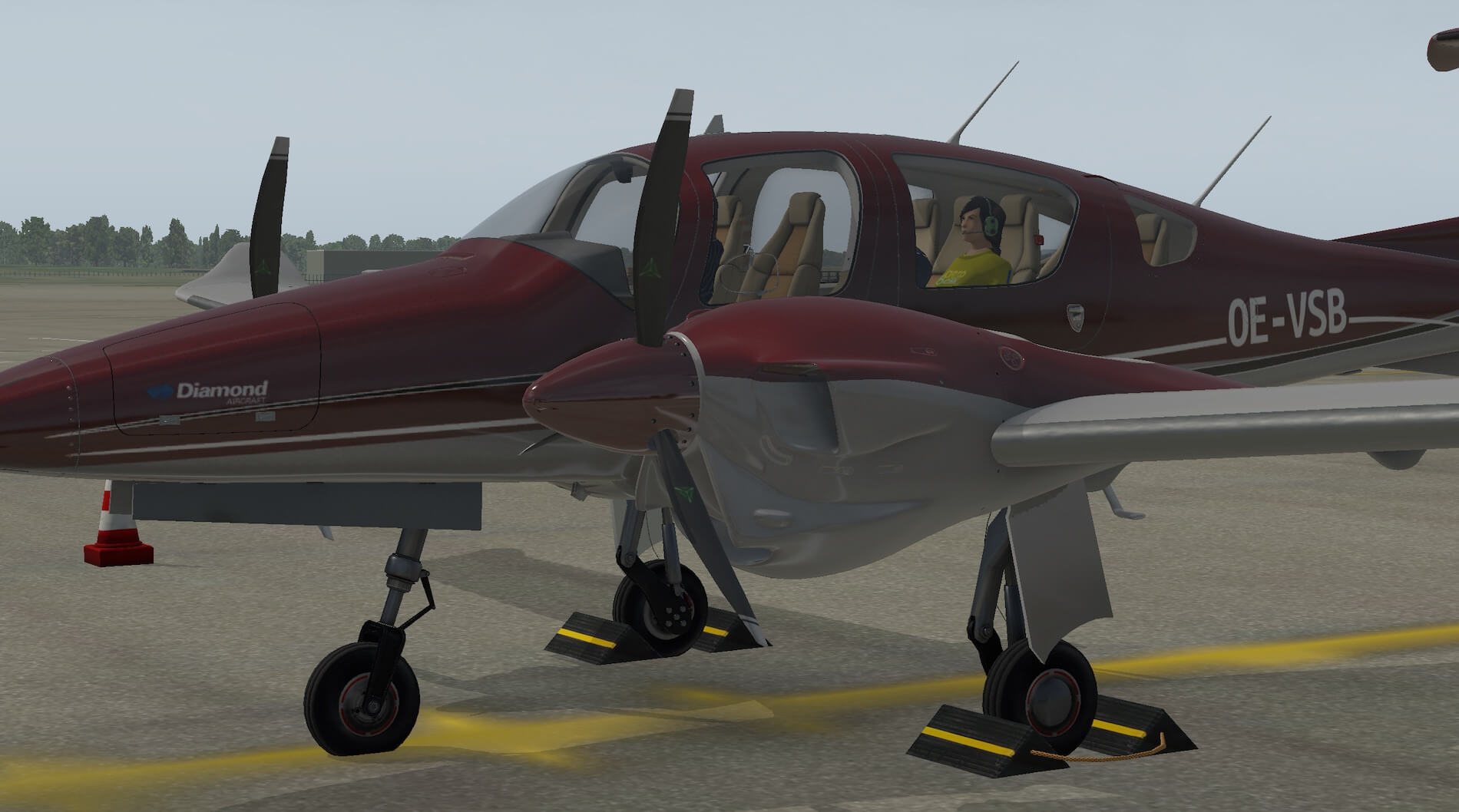
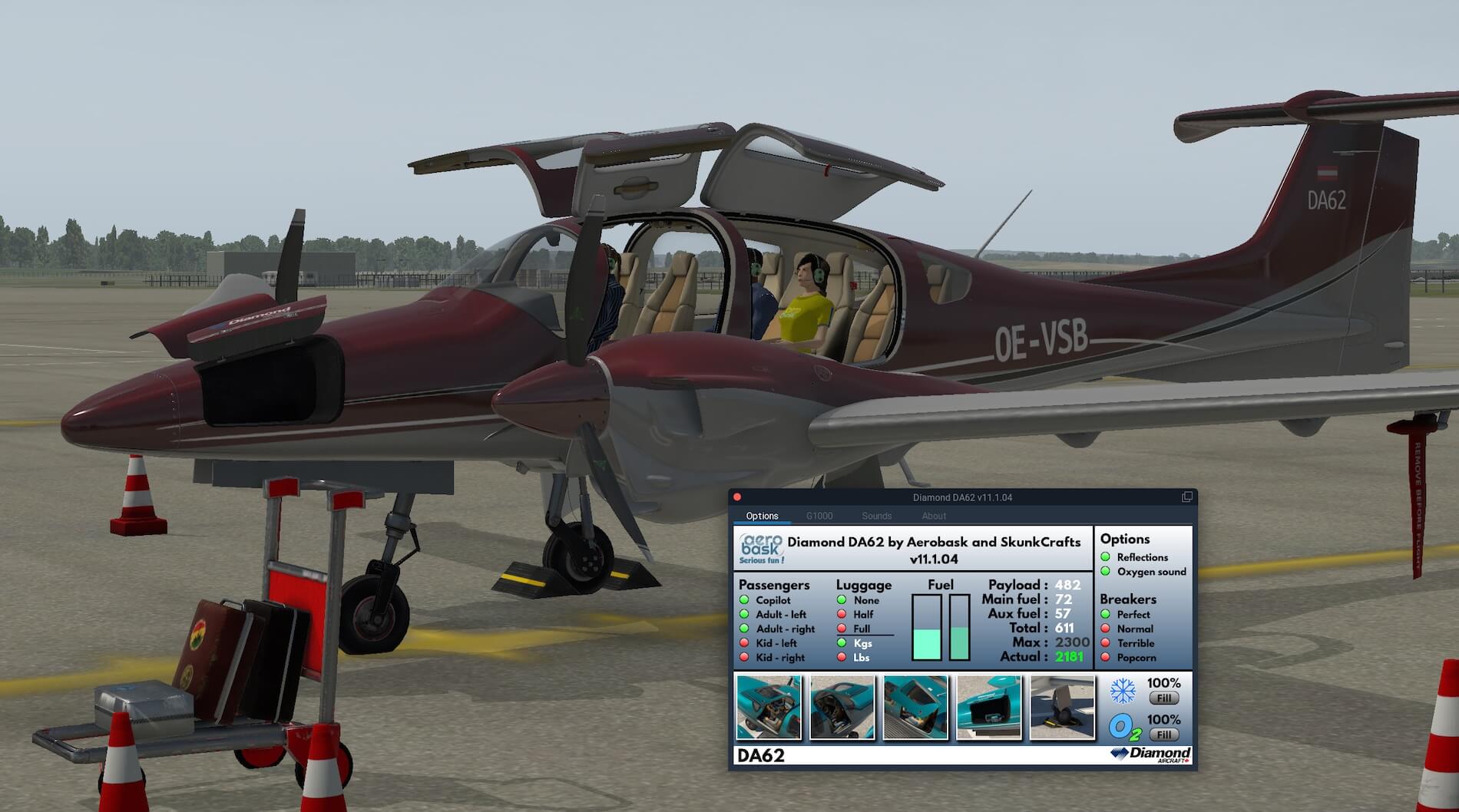




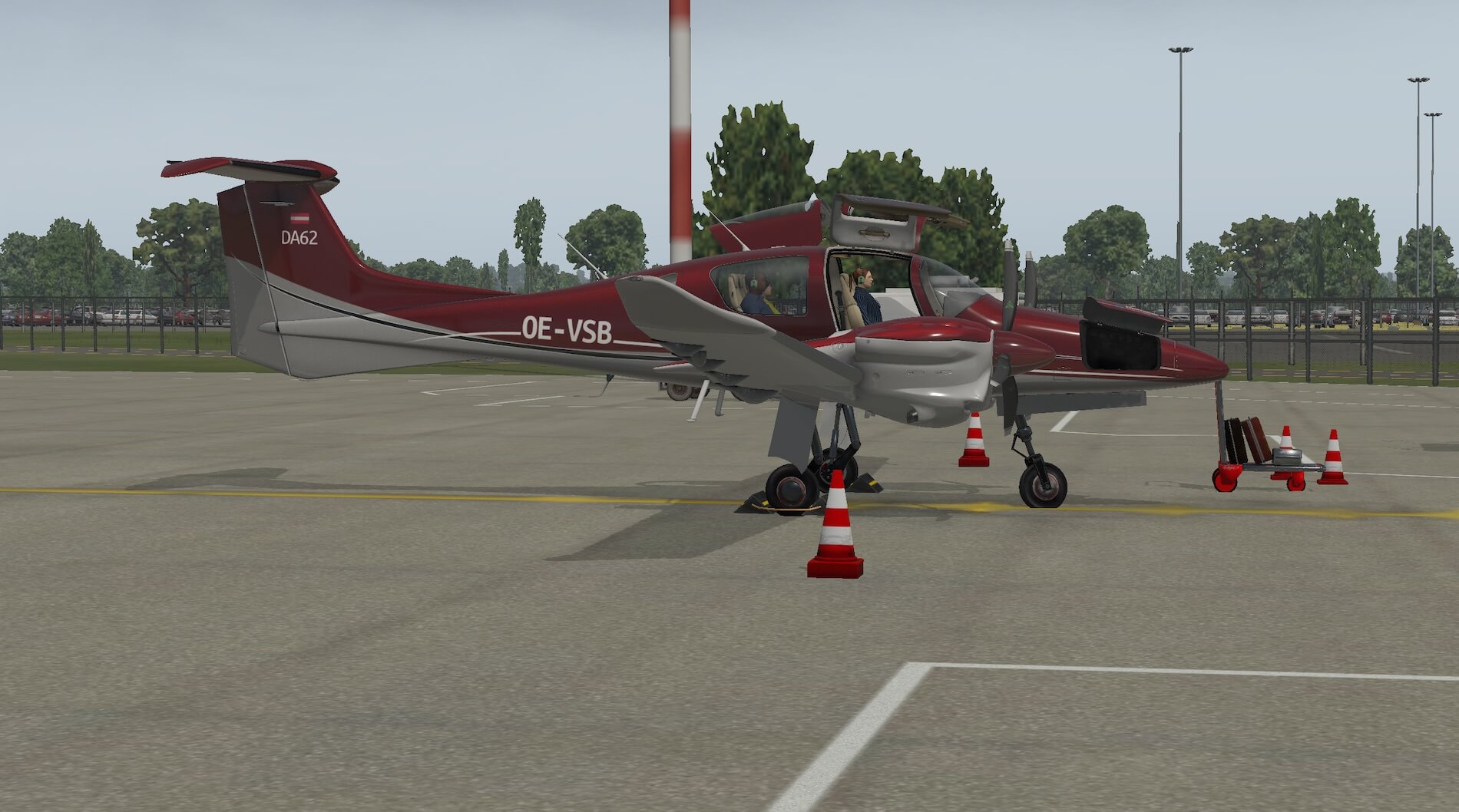
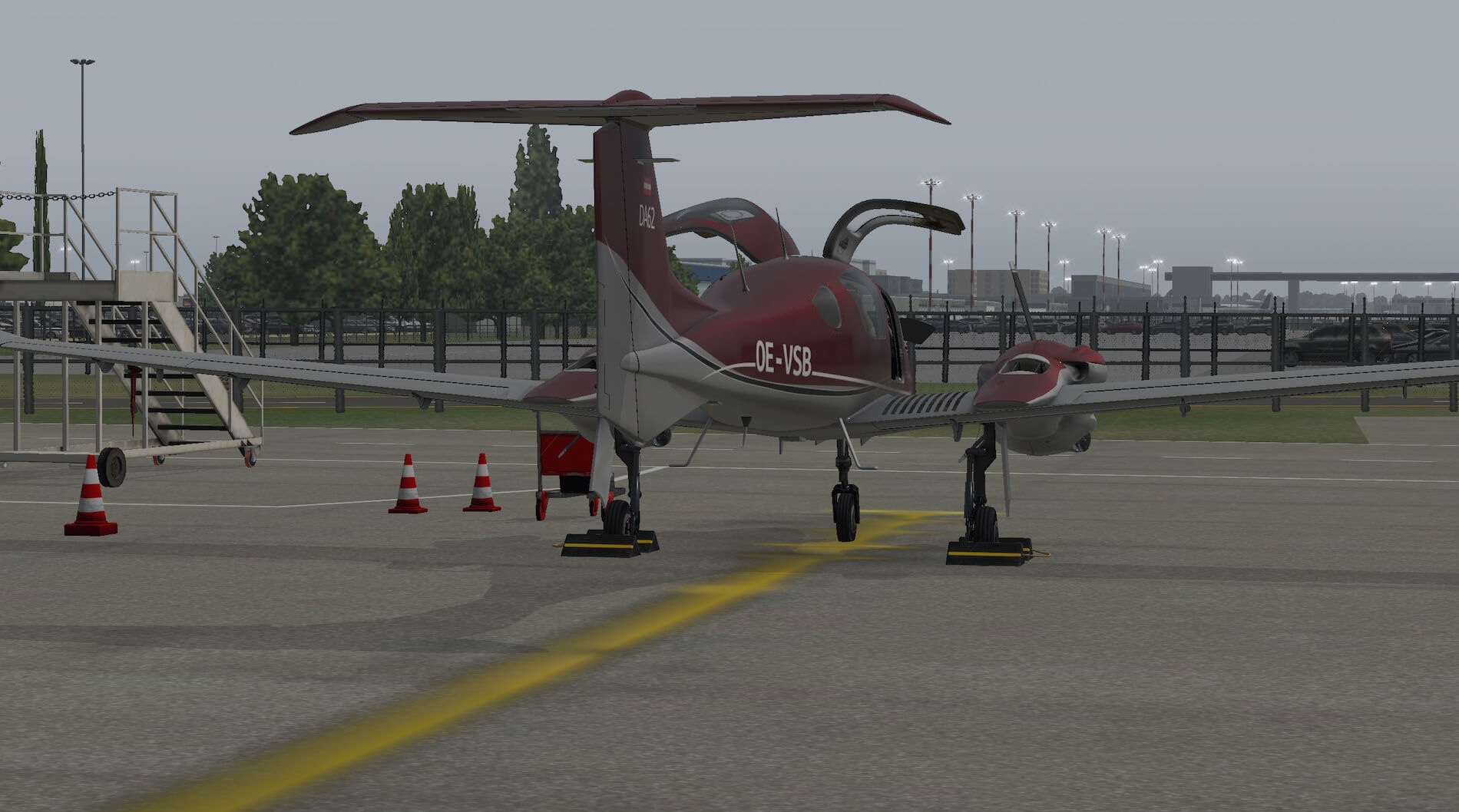


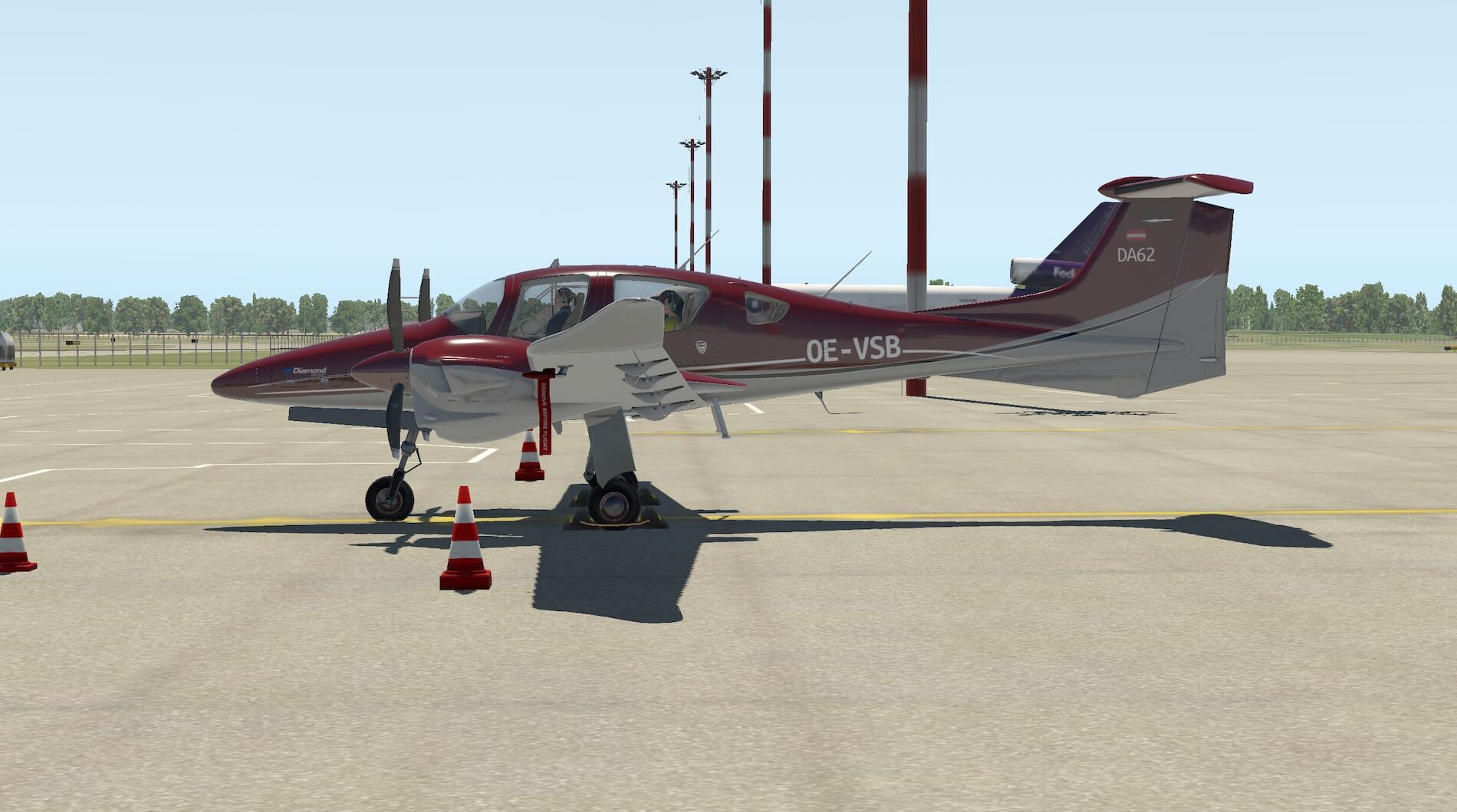
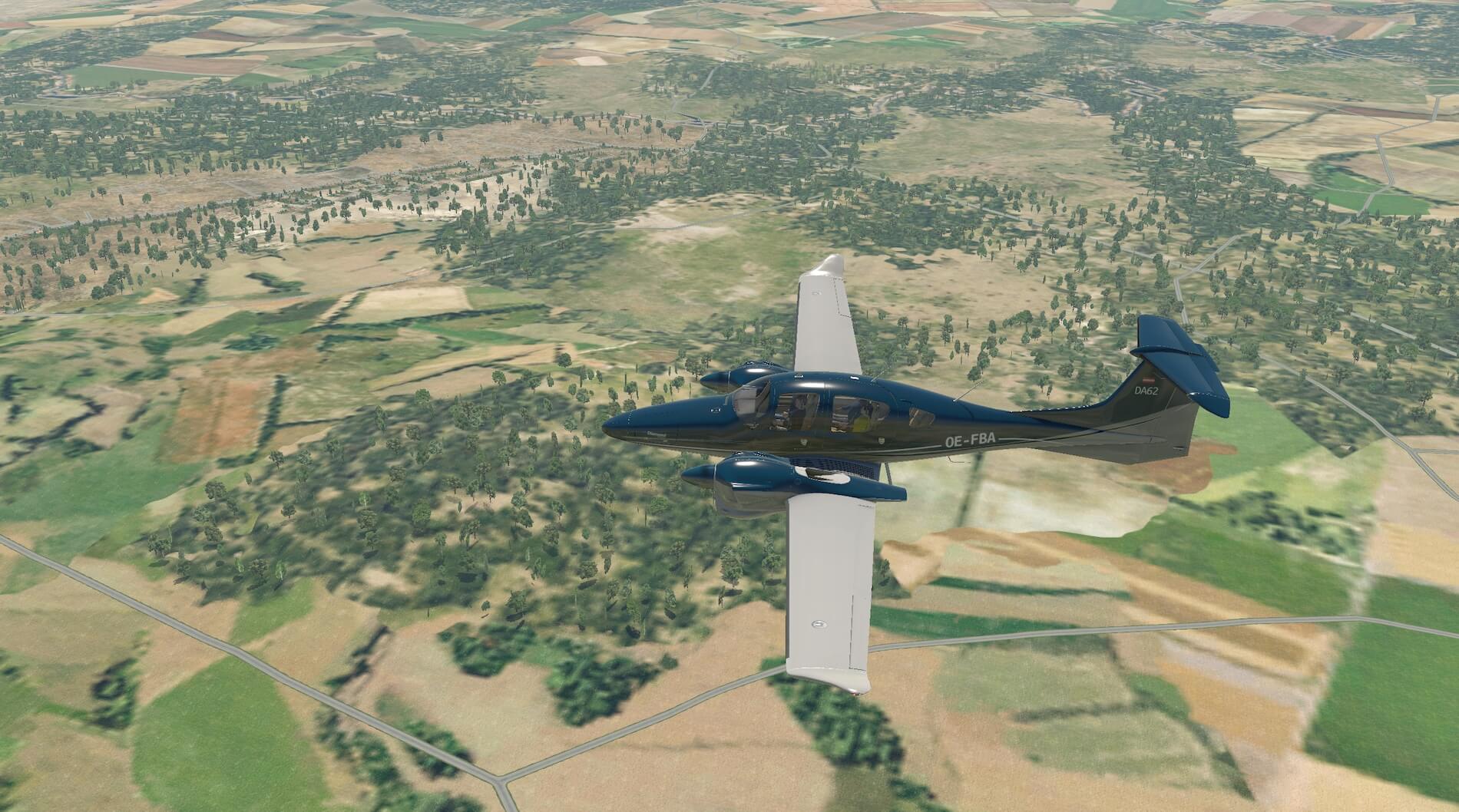
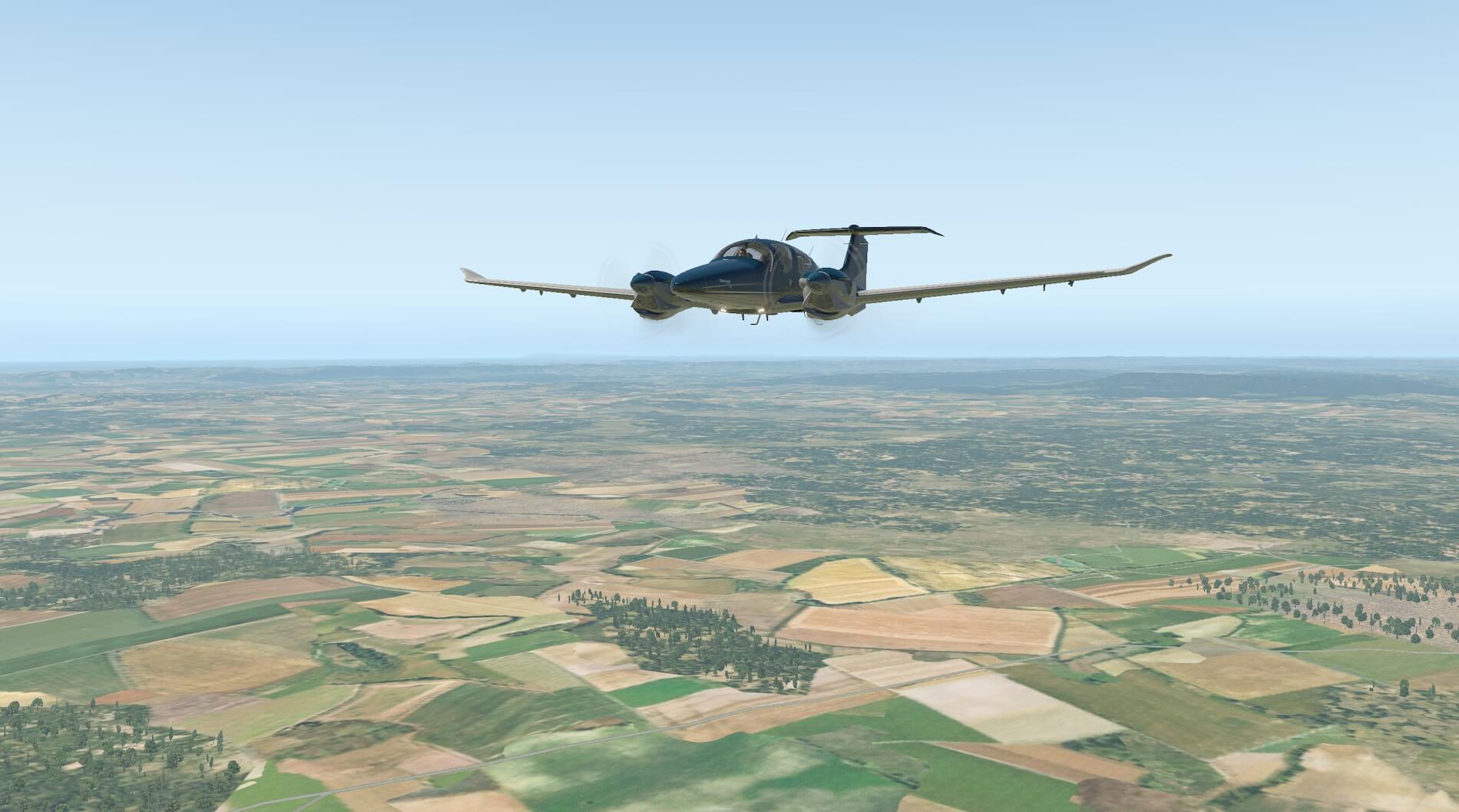


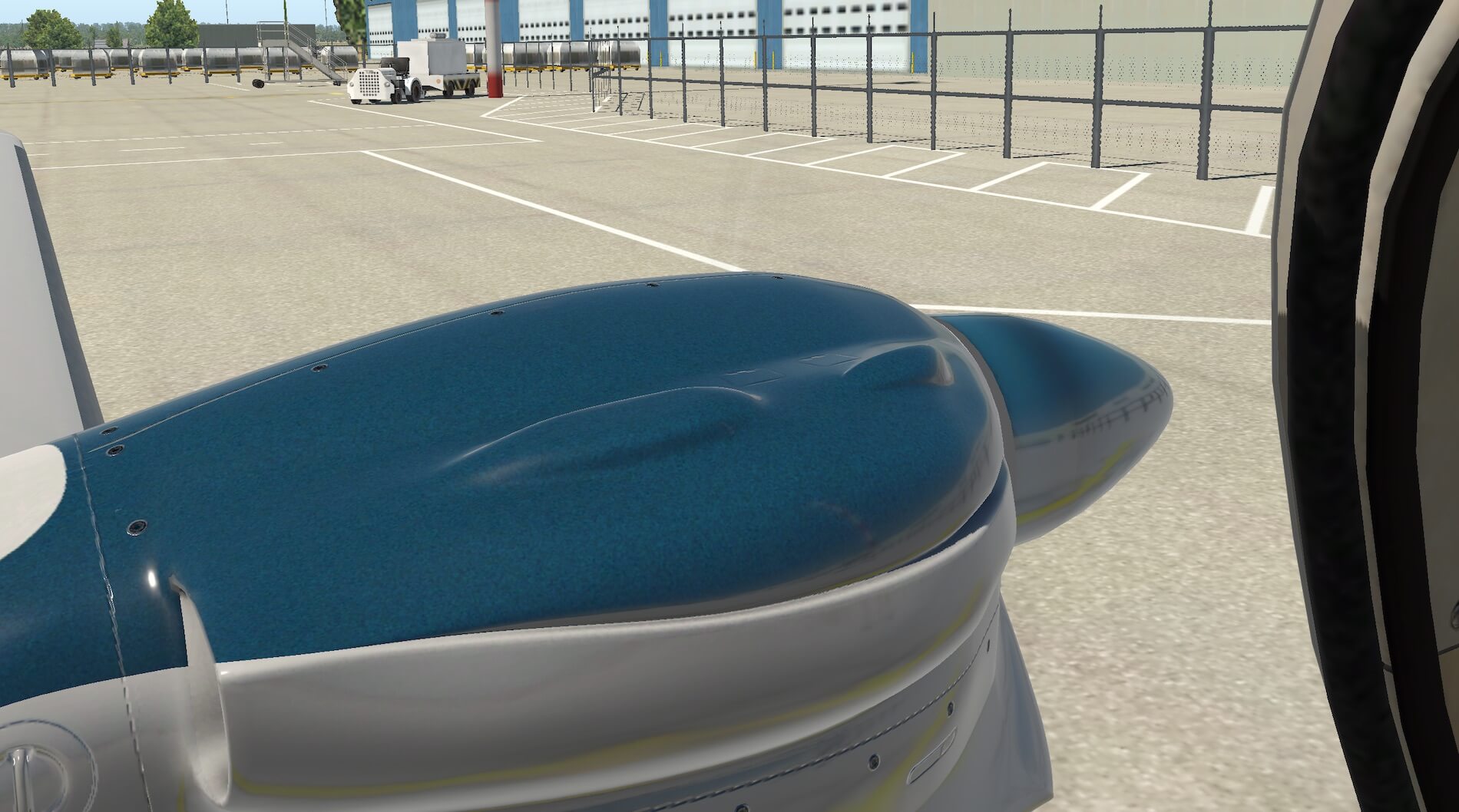
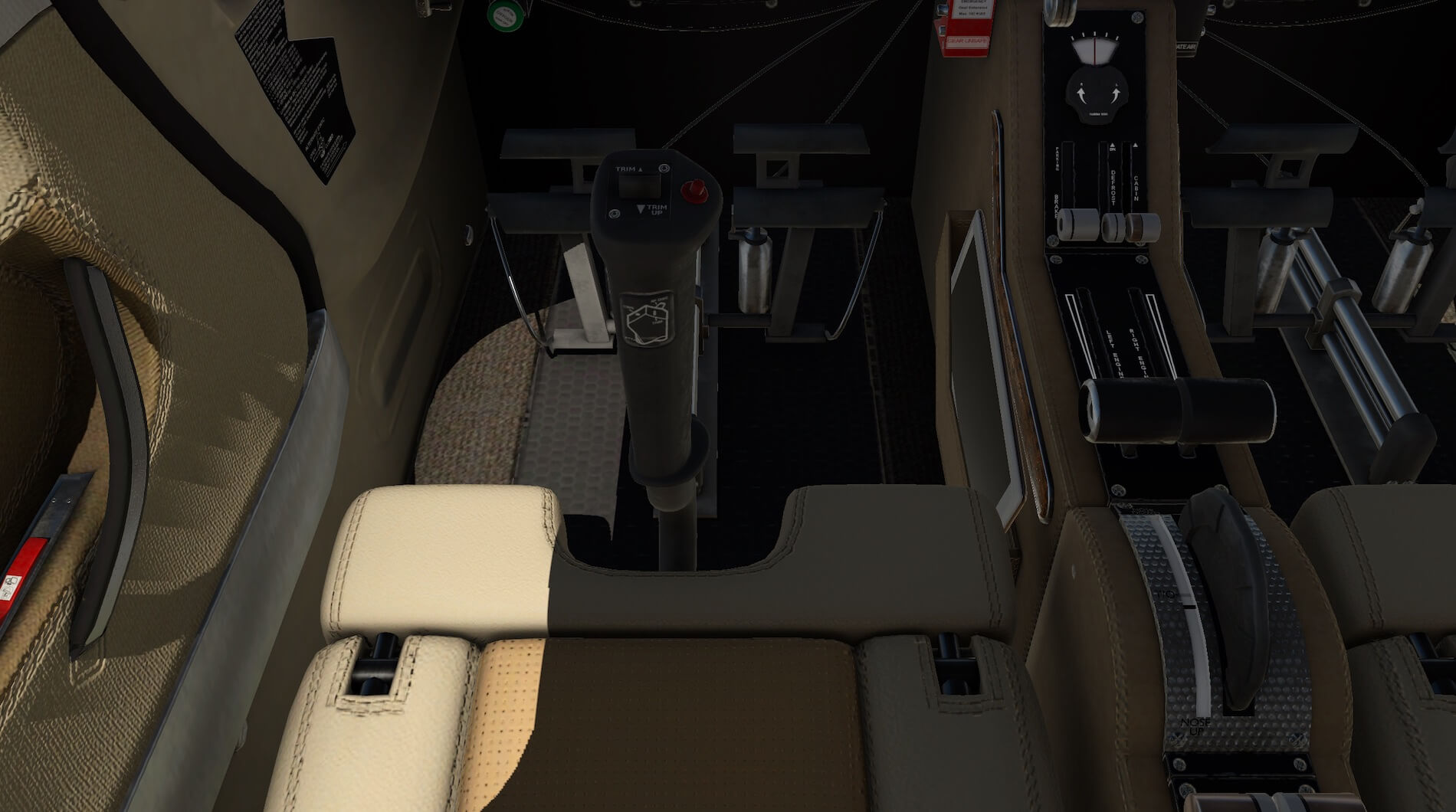
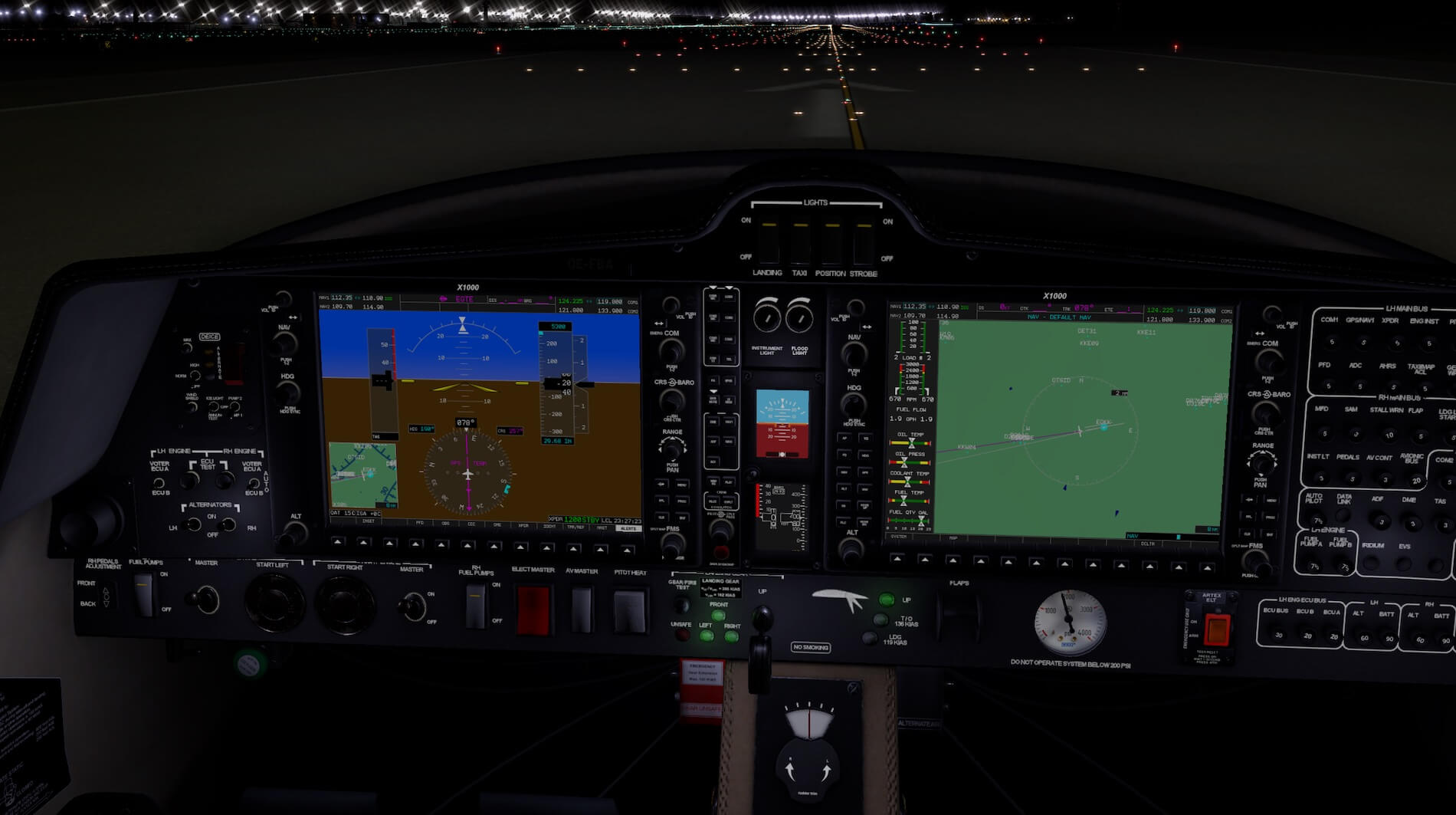



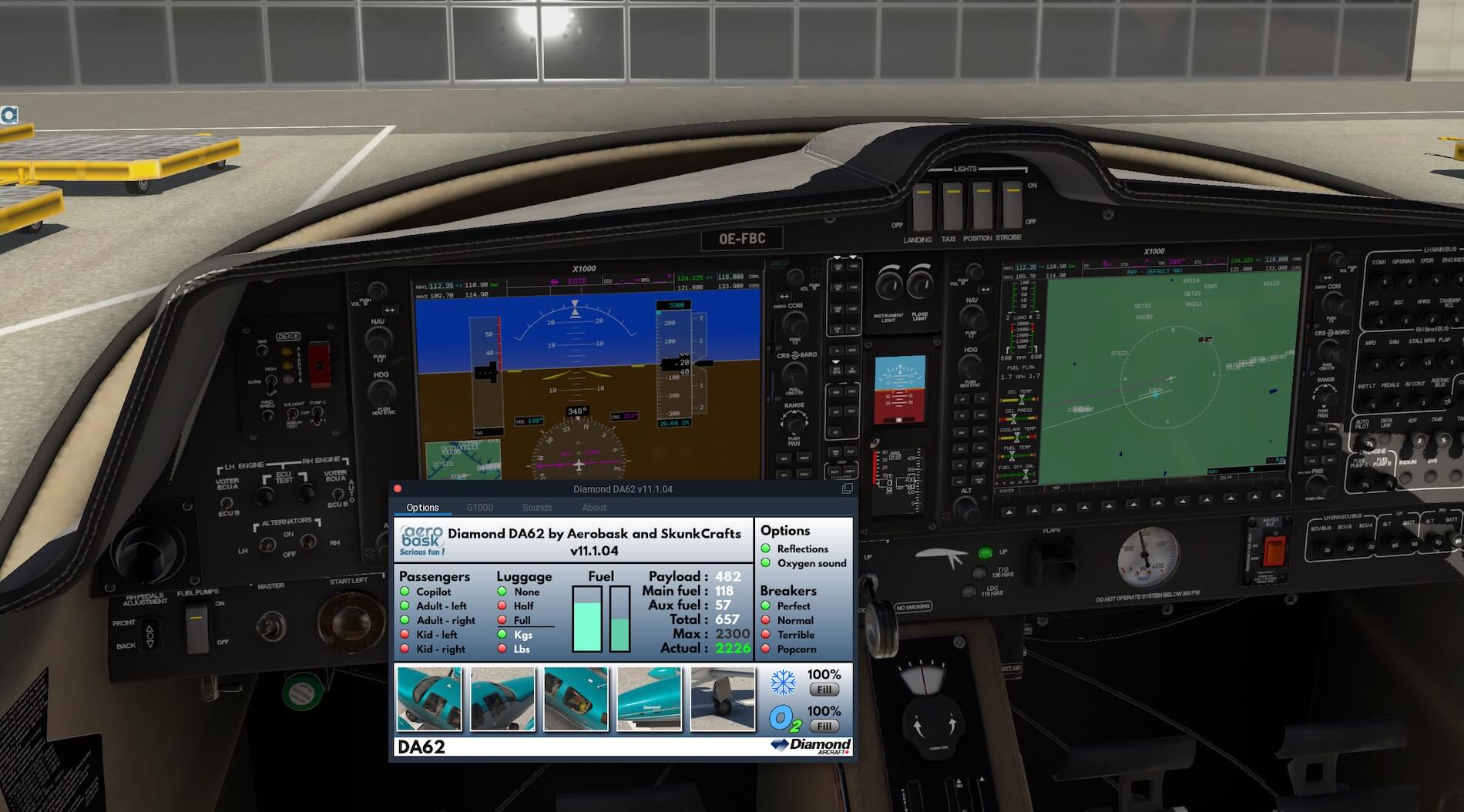
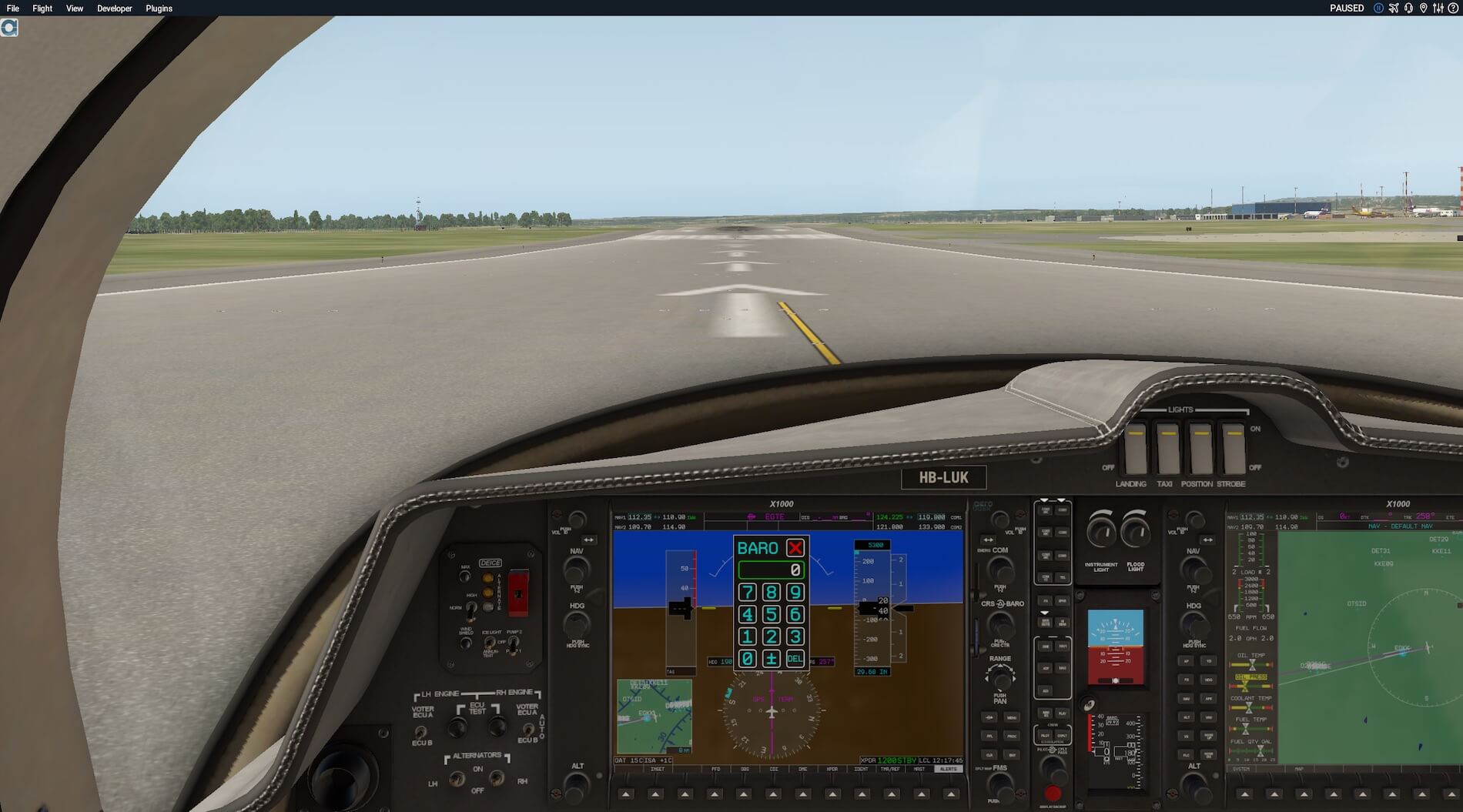
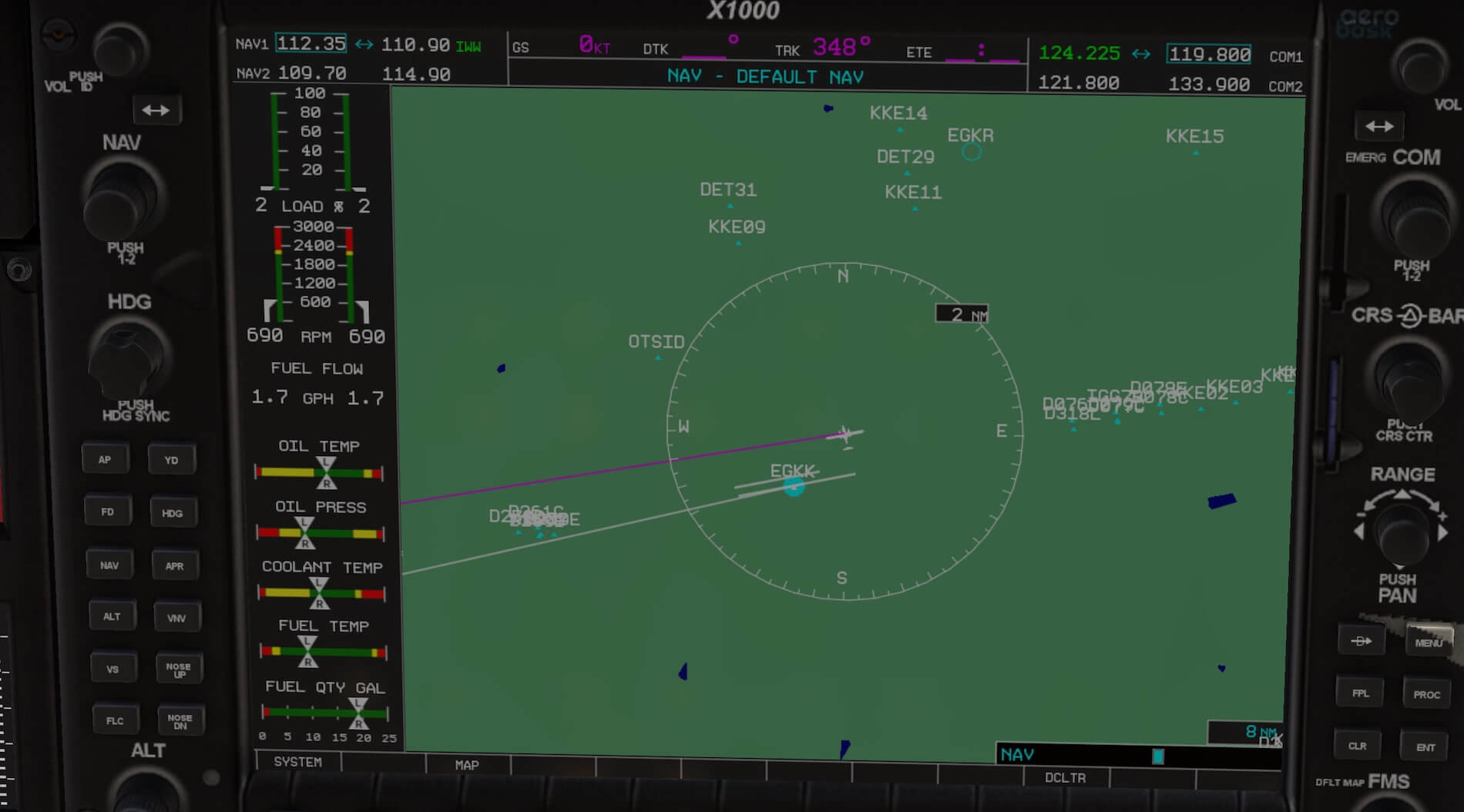
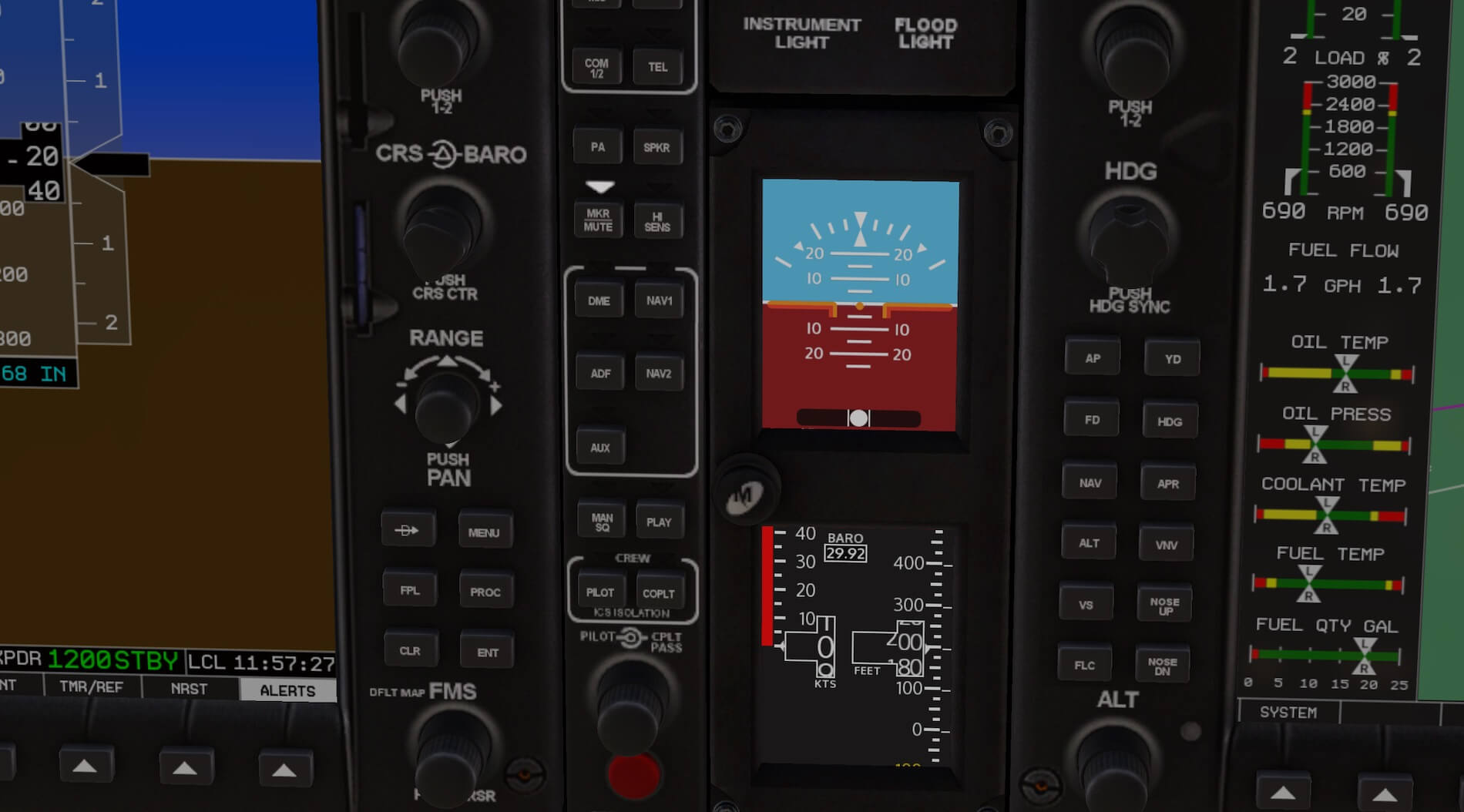


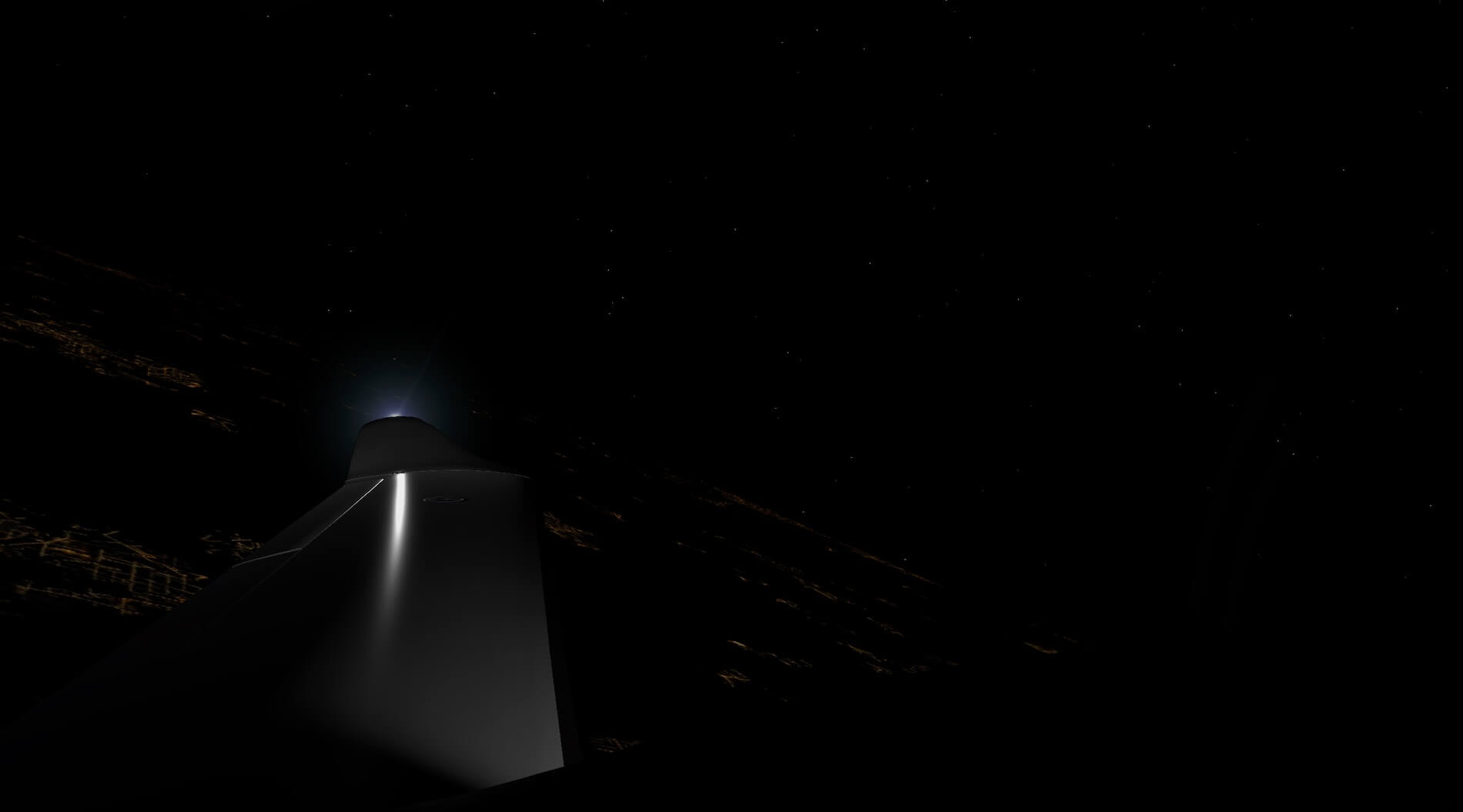




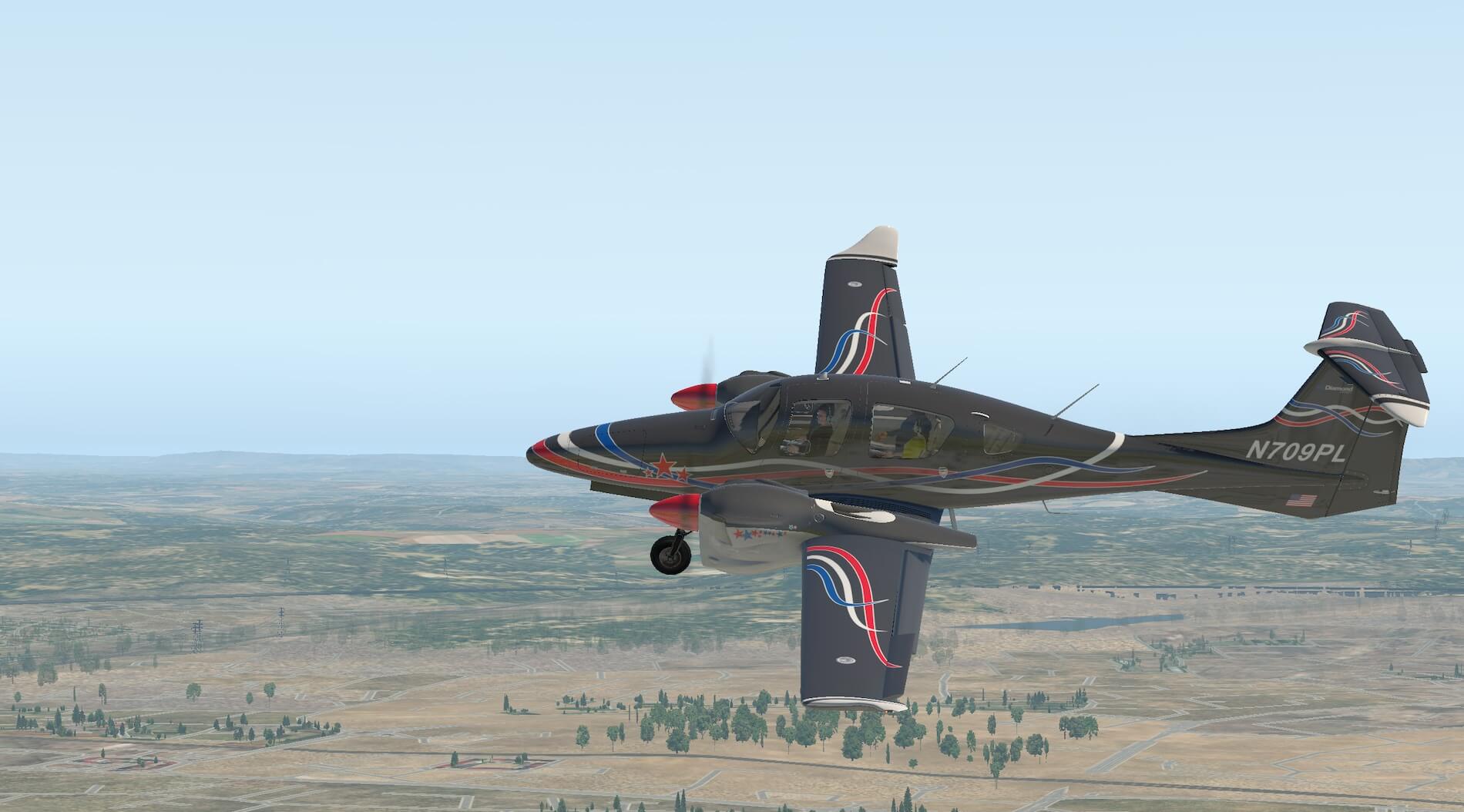


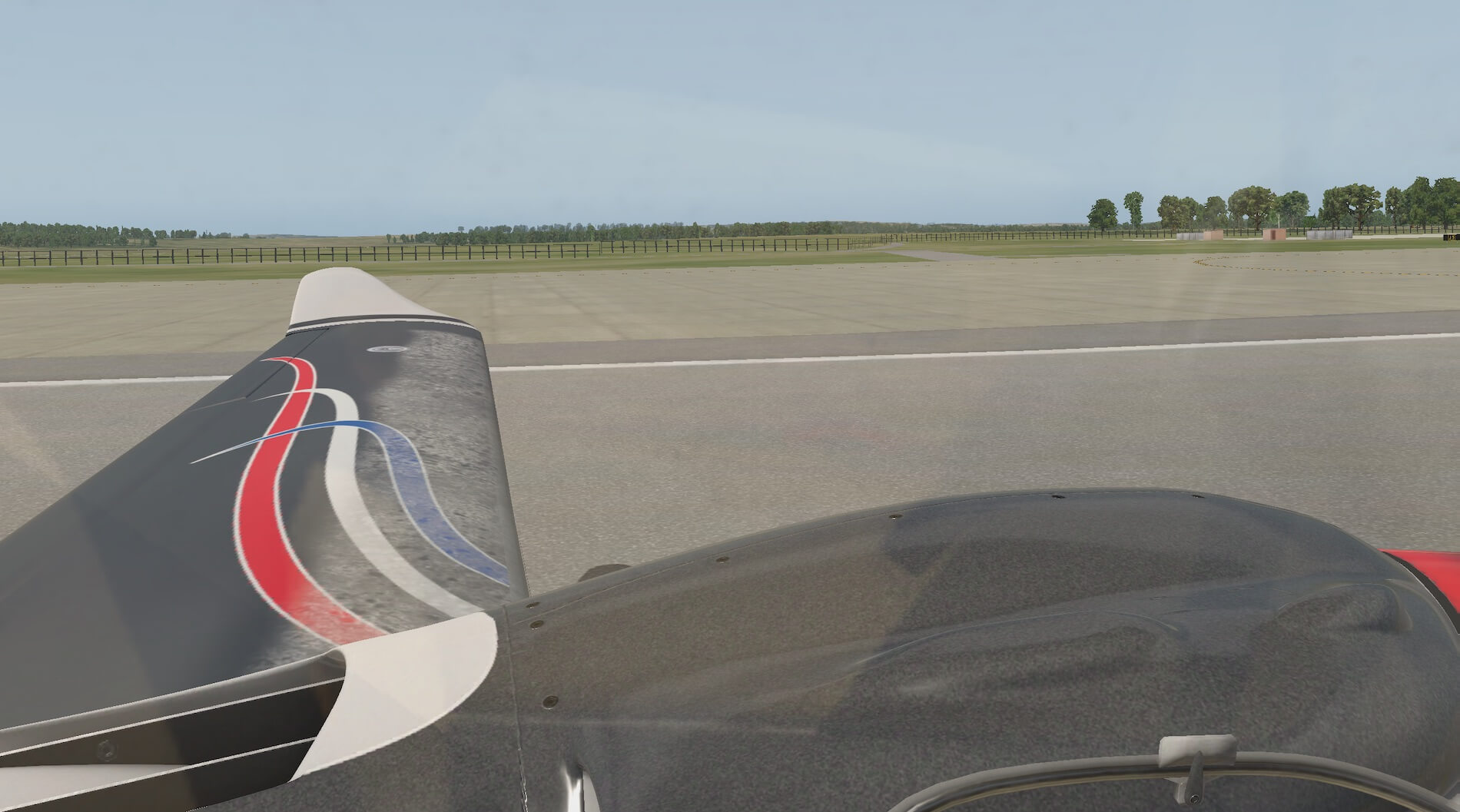

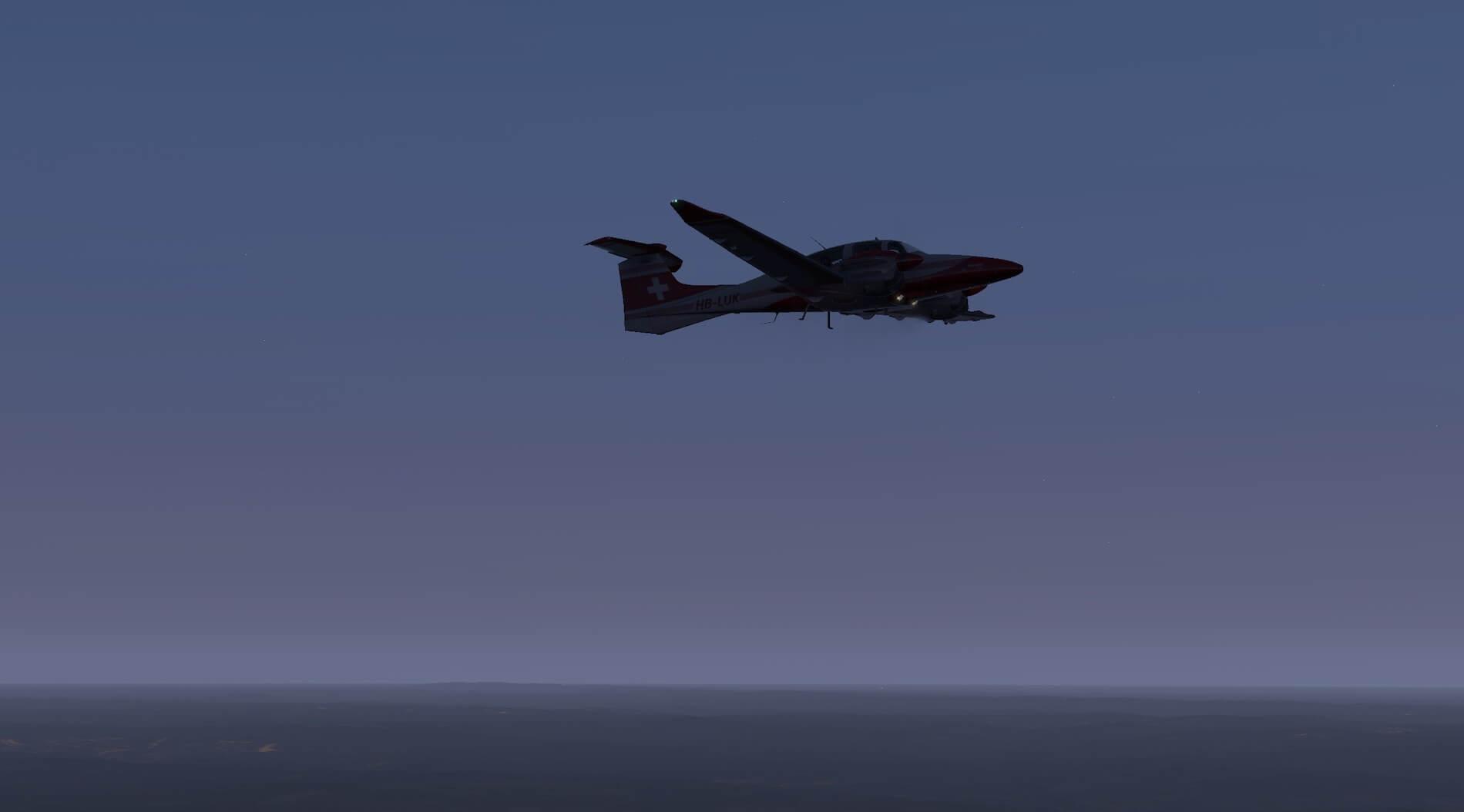


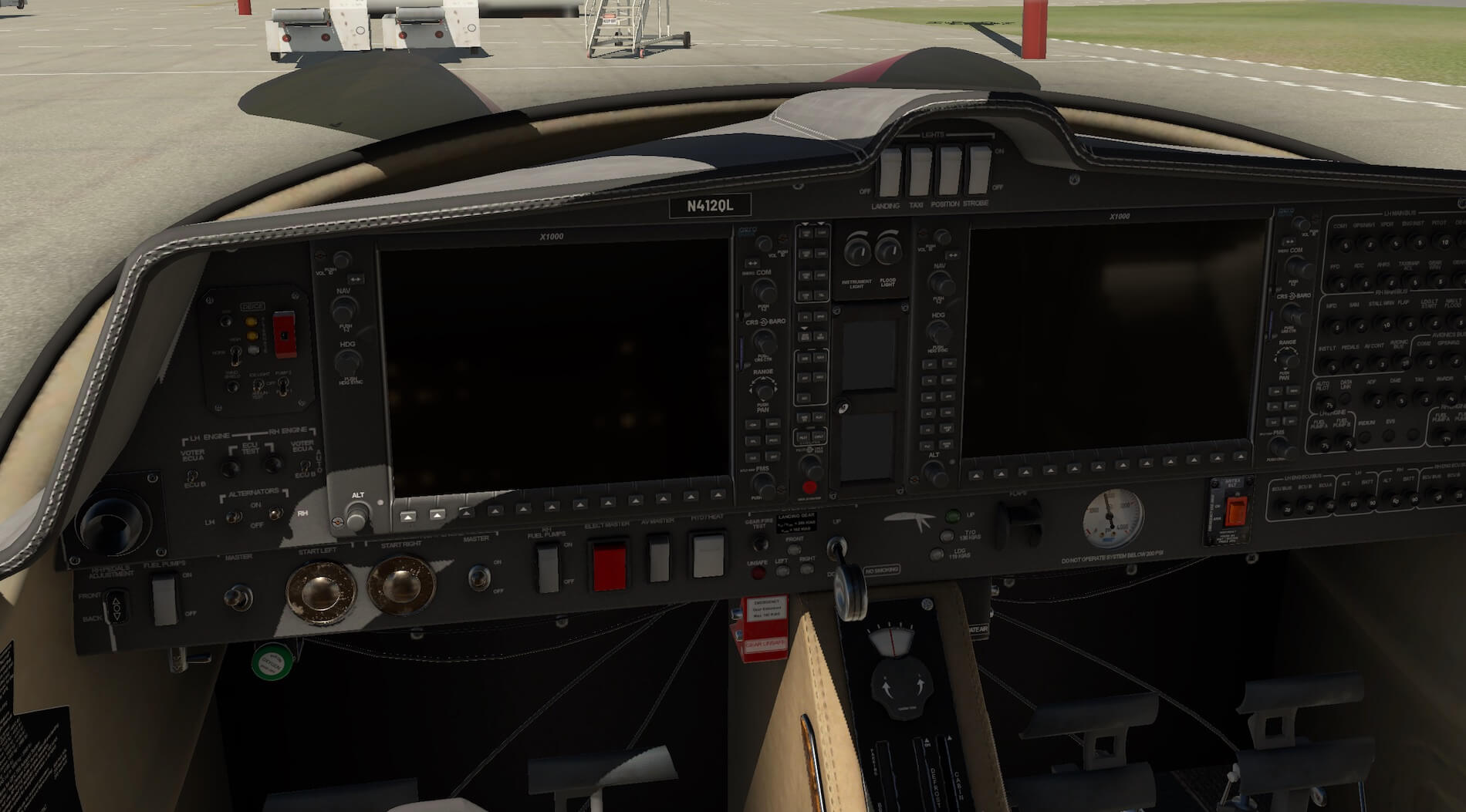

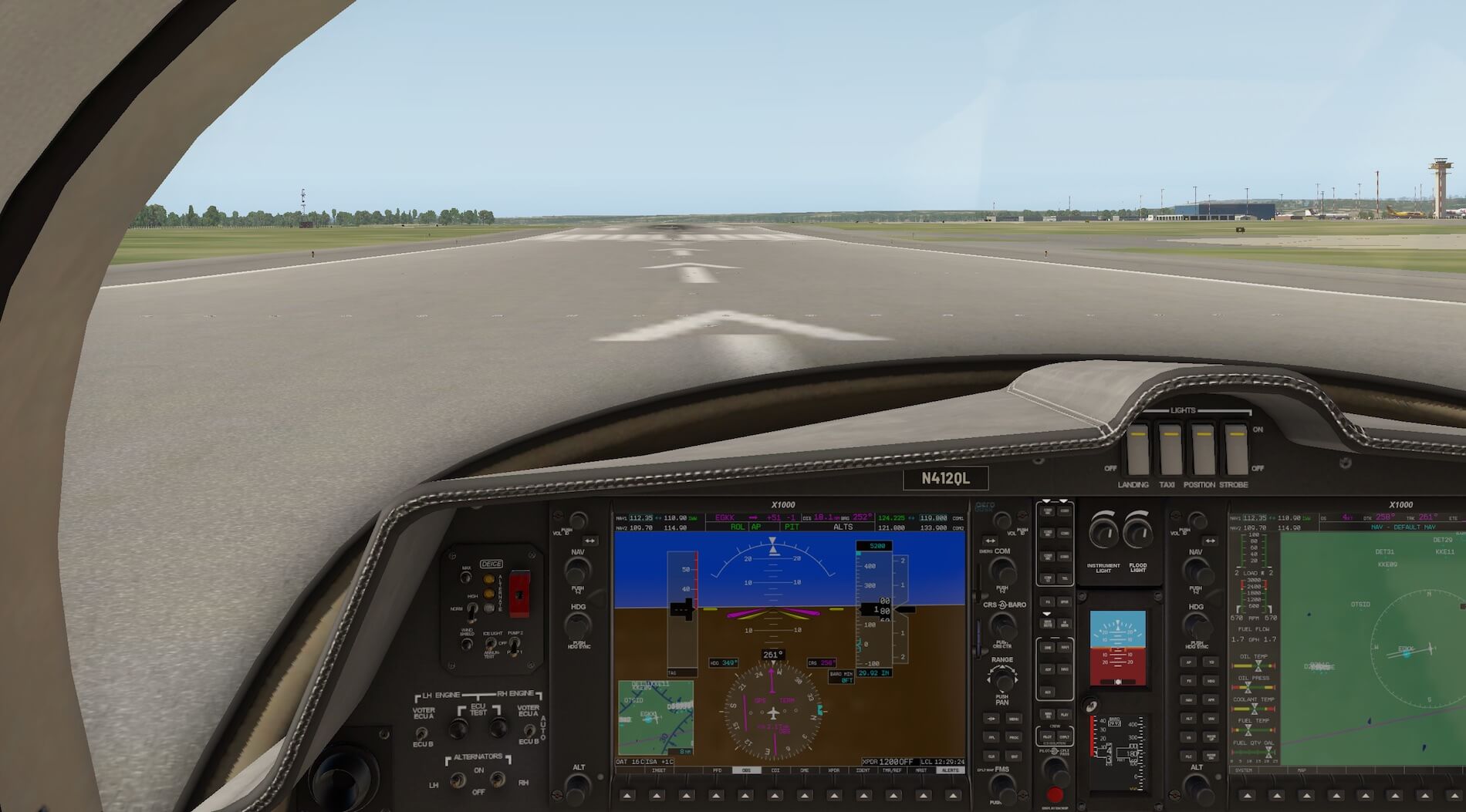

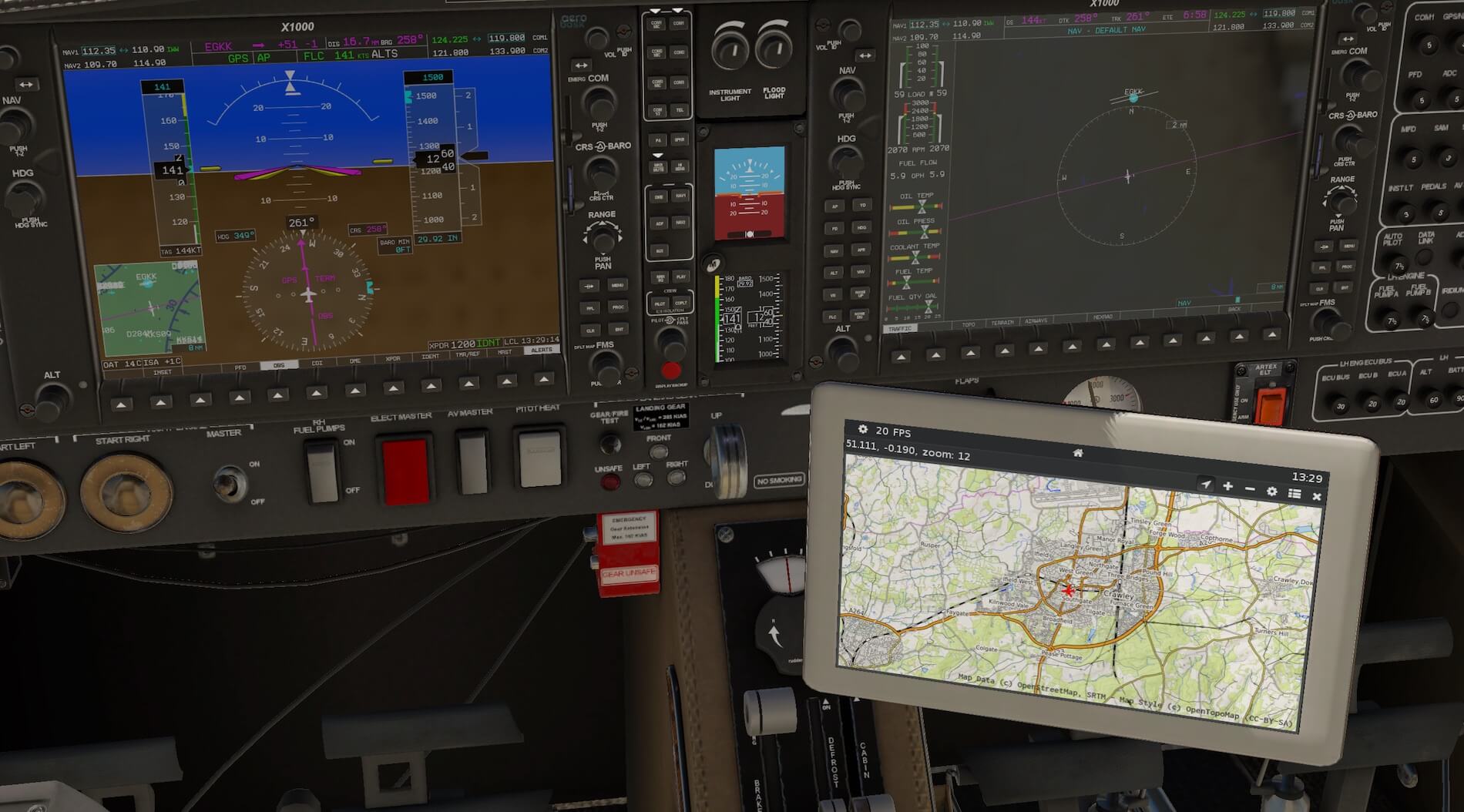
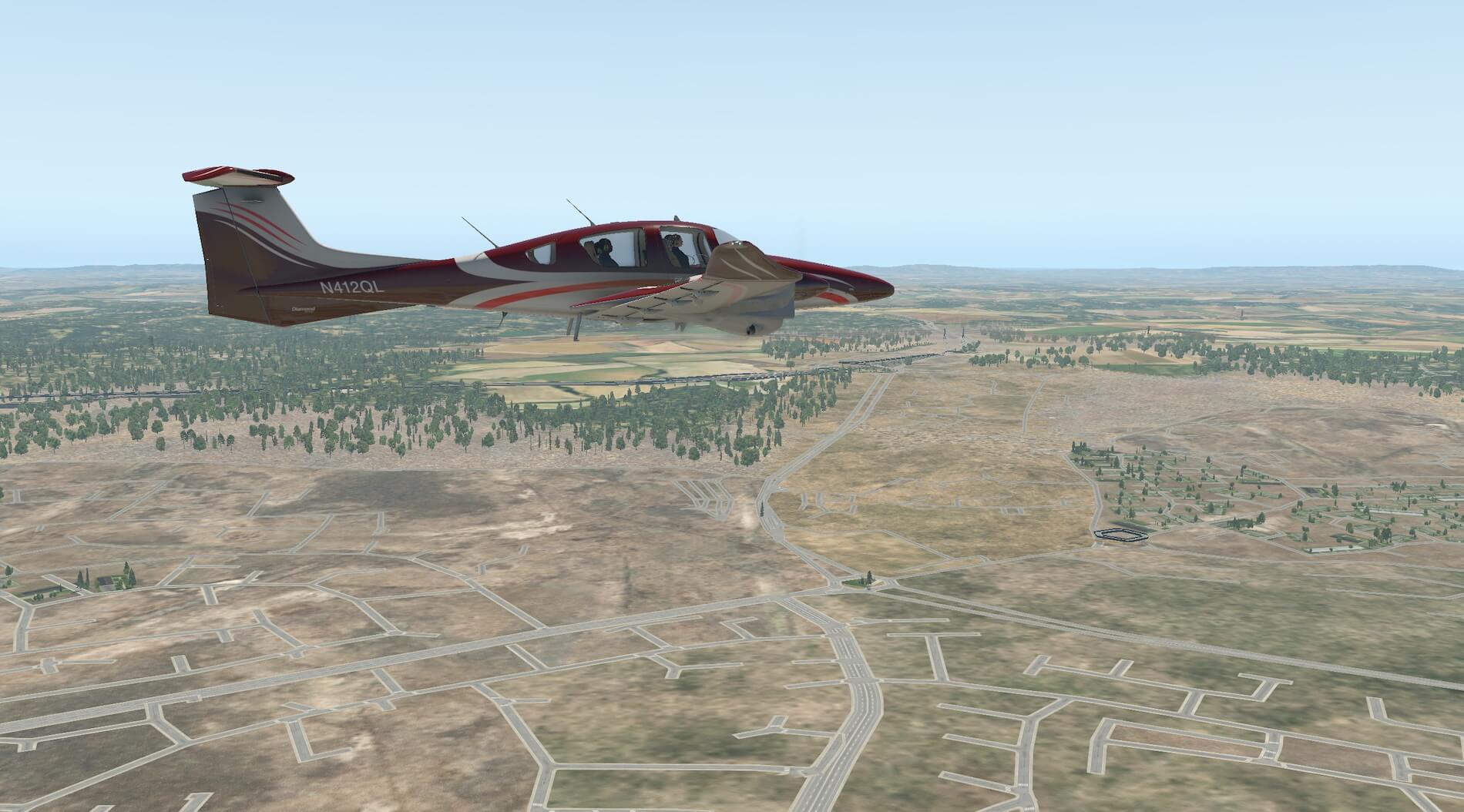
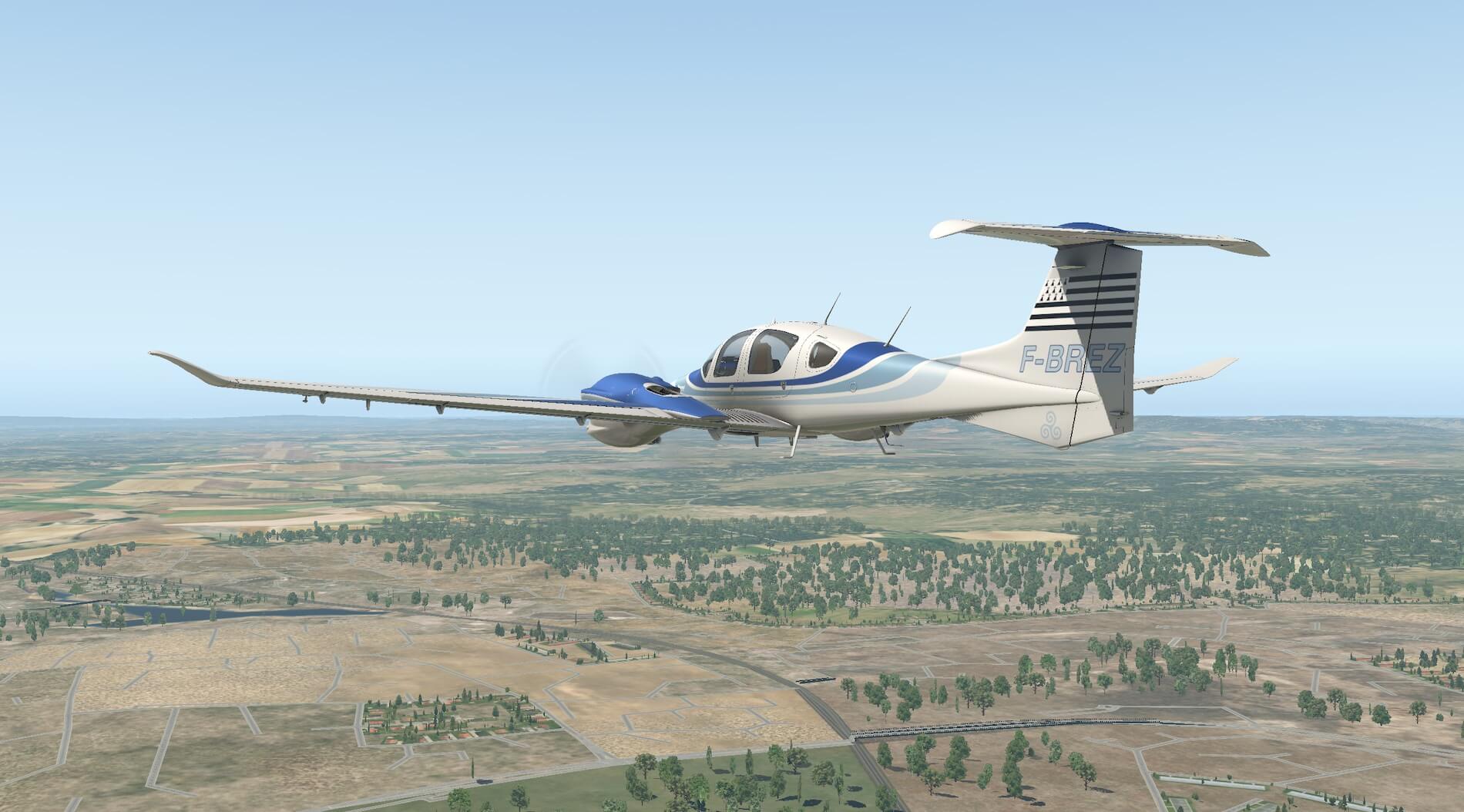



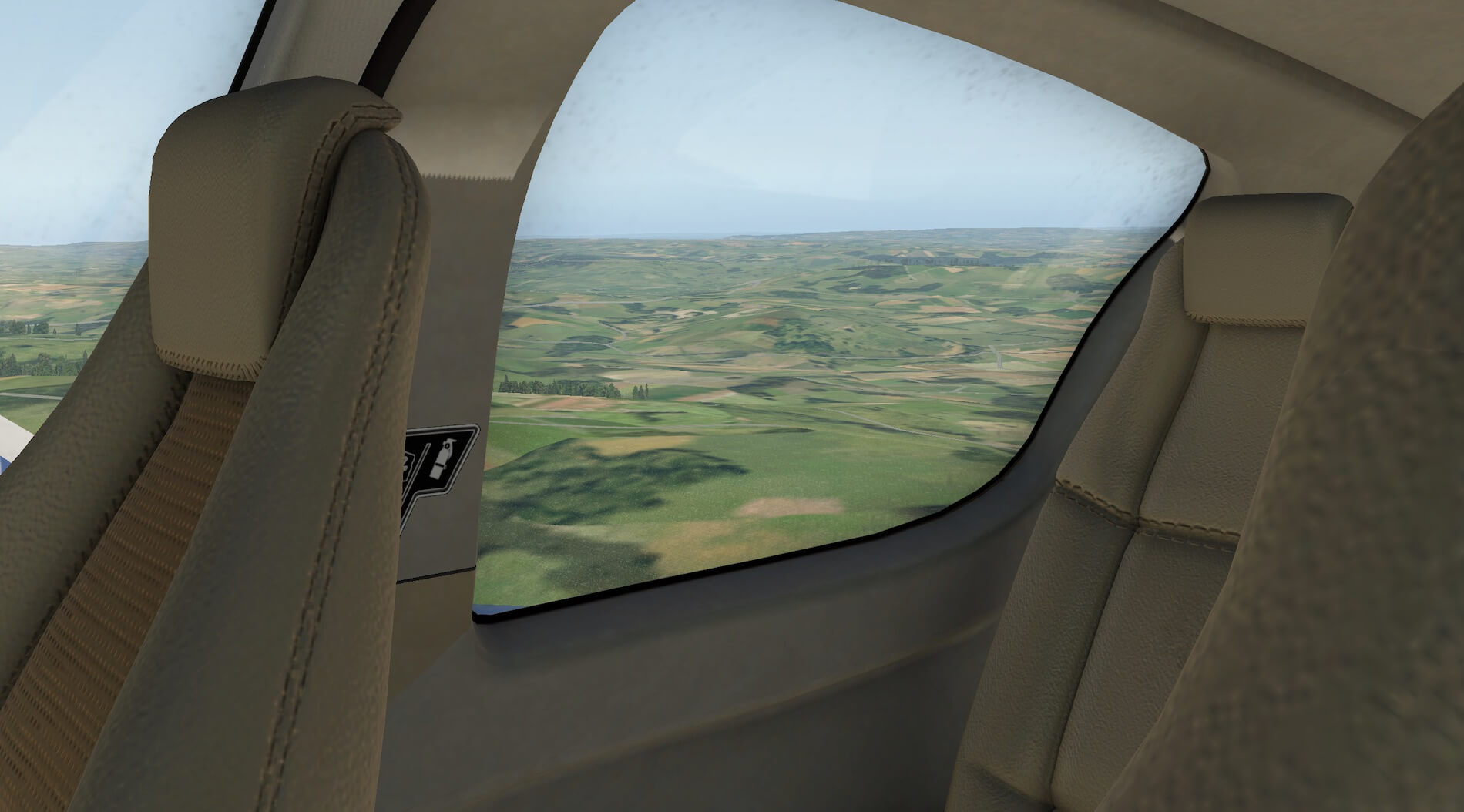


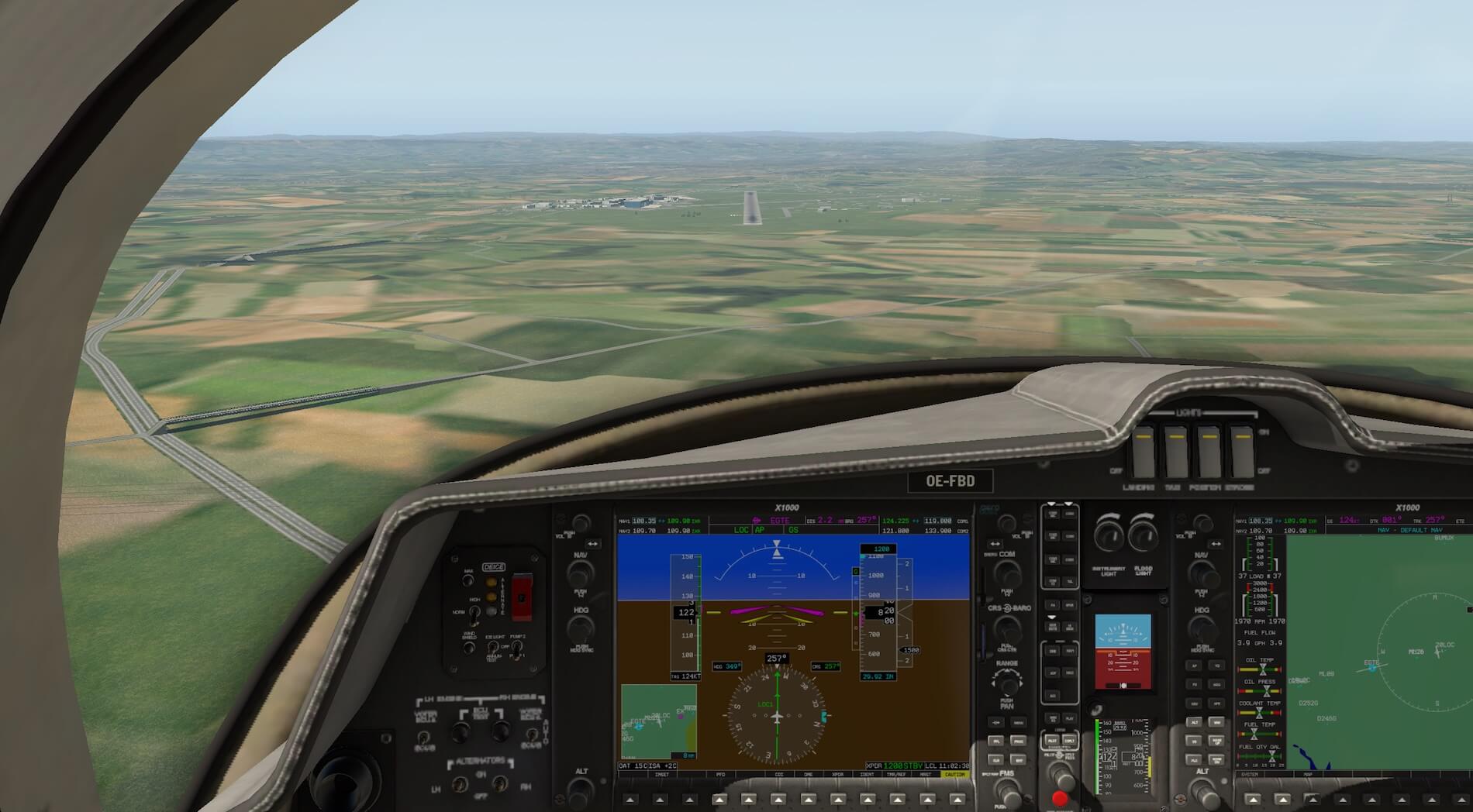



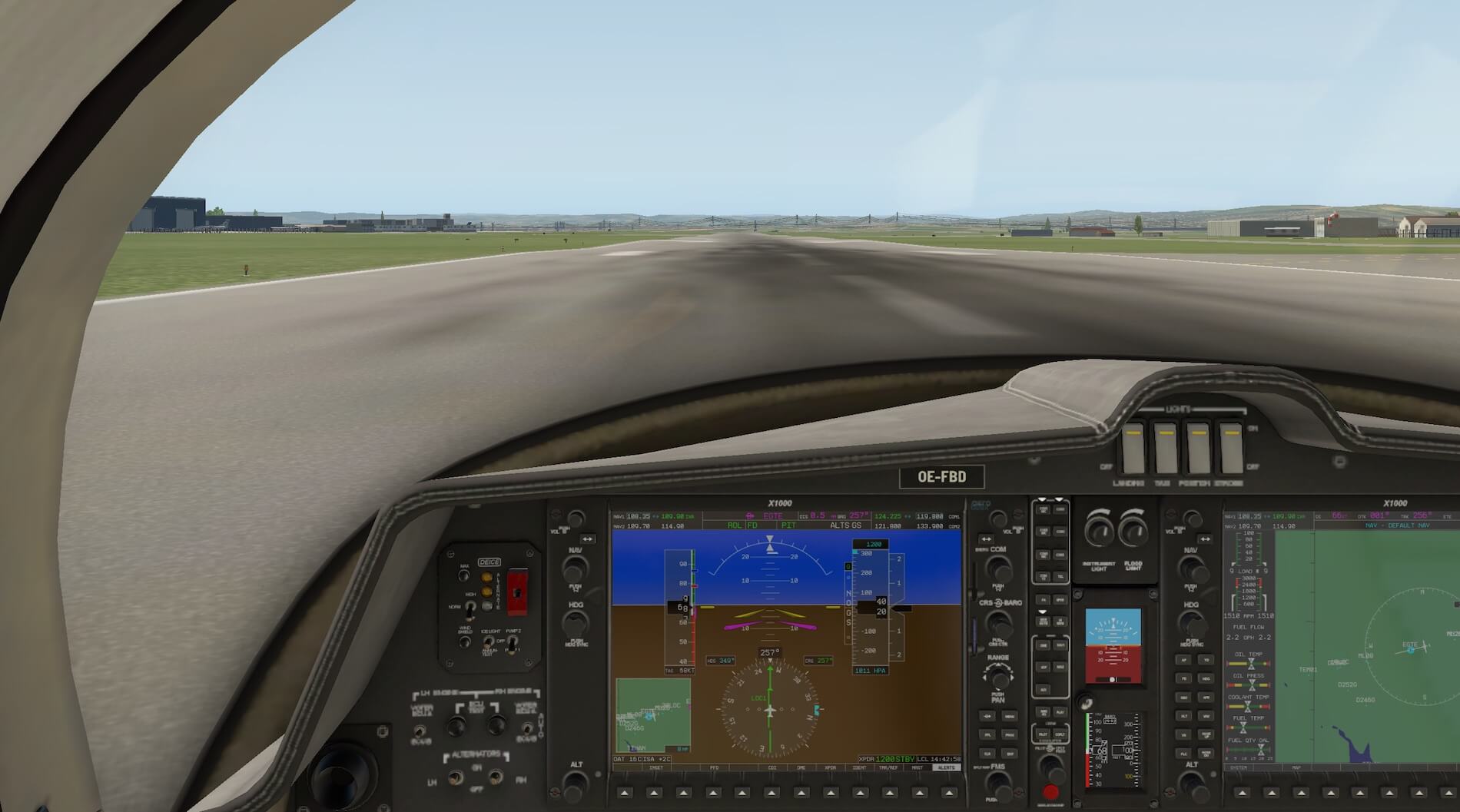

j’adore voler avec cet avion !